www.markyaleharris.com

2022-NMCA-036: No. A-1-CA-39044: McGarrh v. State......................................................................15
2022-NMCA-037: No. A-1-CA-36754: State v. Quintero.......................................................................19
Official Publication of the State Bar of New Mexico February 8, 2023 • Volume 62, No. 3 Inside This Issue
New Mexico Court of Appeals Announces New Chief Judge.........................................................4&9 Legal Specialization Commission: Notice of Commissioner Vacancy......................................................4 Professional Development Program Announcement....................9 The Importance of Personal Pronouns, by Dr. Amanda Parker........................................................................10 From the New Mexico Court of Appeals 2022-NMCA-035:
Construction, L.P. v. Mountain
Mutual Casualty Company ..........................................6
Chaos, by Mark Yale Harris (see page 4)
No. A-1-CA-38977: OR&L
States
2022-NMCA-038: No. A-1-CA-38052: Cardenas v. Aztec Municipal Schools and CCMSI...............................................................................22 CLE PLANNER Upcoming Programming from the CENTER FOR LEGAL EDUCATION
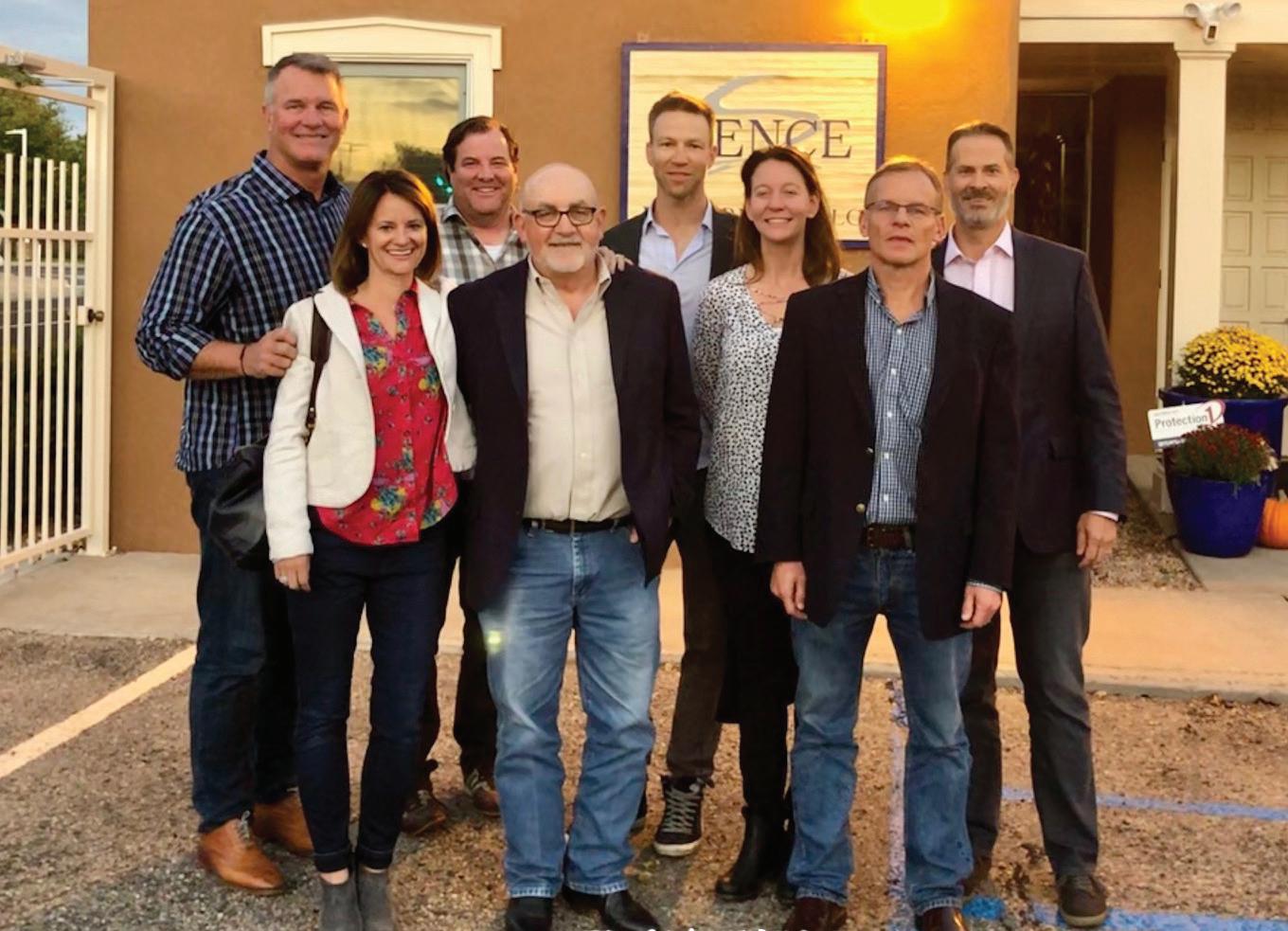
2 Bar Bulletin - February 8, 2023 - Volume 62, No. 3 In-house expertise in all catastrophic cases including carbon monoxide and electrocutions. Over $20 million in co-counsel settlements in 2021 and more than $1 billion in the firm’s history. Call us for your next case, 505.832.6363. SpenceNM.com. Co-counsel for your toughest cases.
Table of Contents
State Bar of New Mexico
State of New Mexico
Est. 1886
Officers, Board of Bar Commissioners
Benjamin I. Sherman, President
Erinna M. Atkins, President-Elect
Aja N. Brooks, Secretary Treasurer
Carolyn A. Wolf, Immediate Past President
State Bar Staff
Executive Director, Richard Spinello
Marketing Communications Manager, Celeste Valencia, celeste.valencia@sbnm.org
Graphic Designer, Julie Sandoval, julie.sandoval@sbnm.org
Account Executive, Marcia C. Ulibarri, 505-797-6058 • marcia.ulibarri@sbnm.org
Brandon McIntyre, Communications Coordinator brandon.mcintyre@sbnm.org
©2023, State Bar of New Mexico. No part of this publication may be reprinted or otherwise reproduced without the publisher’s written permission. The Bar Bulletin has the authority to edit letters and materials submitted for publication. Publishing and editorial decisions are based on the quality of writing, the timeliness of the article, and the potential interest to readers. Appearance of an article, editorial, feature, column, advertisement or photograph in the Bar Bulletin does not constitute an endorsement by the Bar Bulletin or the State Bar of New Mexico. The views expressed are those of the authors, who are solely responsible for the accuracy of their citations and quotations. State Bar members receive the Bar Bulletin as part of their annual dues. The Bar Bulletin is available at the subscription rate of $125 per year and is available online at www.sbnm.org.
The Bar Bulletin (ISSN 1062-6611) is published twice a month by the State Bar of New Mexico, 5121 Masthead NE, Albuquerque, NM 87109-4367. Periodicals postage paid at Albuquerque, NM. Postmaster: Send address changes to Bar Bulletin, PO Box 92860, Albuquerque, NM 87199-2860.
505-797-6000 • 800-876-6227
Fax: 505-828-3765 • address@sbnm.org
February 8, 2023 • Volume 62, No. 3
www.sbnm.org
Intellectual
About Cover Image and Artist: Born in Buffalo, New York, Mark Yale Harris spent his childhood enthralled in a world of drawing and painting. Though honored for his creative endeavors, he was encouraged to pursue a more conventional career. After finding conventional success, the artistic passion that existed just beneath the surface was able to present itself. Harris began sculpting, and has since created an evolving body of work in stone and bronze, now featured in public collections, museums and galleries worldwide, including: Hilton Hotels; Royal Academy of London; Marin MOCA; Four Seasons Hotels and the Open Air Museum - Ube, Japan.
Bar Bulletin - February 8, 2023 - Volume 62, No. 3 3 Workshops and Legal Clinics February 22 Consumer Debt/Bankruptcy Workshop 6-8 p.m., virtual March 1 Divorce Options Workshop 6-8 p.m., virtual 22 Consumer Debt/Bankruptcy Workshop 6-8 p.m., virtual April 5 Divorce Options Workshop 6-8 p.m., virtual
Notices ................................................................................................................................................................ 4 Calendar for Legal Education ....................................................................................................................... 5 New Mexico Court of Appeals Elects New Chief Judge 9 Professional Development Program Announcement 9 The Importance of Personal Pronouns, by Dr. Amanda Parker 10 From the New Mexico Court of Appeals 2022-NMCA-035: No. A-1-CA-38977: OR&L Construction, L.P. v. Mountain States Mutual Casualty Company 6 2022-NMCA-036: No. A-1-CA-39044: McGarrh v. State 15 2022-NMCA-037: No. A-1-CA-36754: State v. Quintero 19 2022-NMCA-038: No. A-1-CA-38052: Cardenas v. Aztec Municipal Schools and CCMSI 22 Advertising ...................................................................................................................................................... 26
Est. 1886 Meetings February 10 Prosecutors Section noon, virtual 14 Business Law Section 11 a.m., virtual 17 Family Law Section 9 a.m., virtual 20 Children's Law Section noon, virtual 21 Solo and Small Firm Section 9 a.m., virtual 21 Appellate Section noon, virtual 24 Immigration Law Section noon, virtual 28
Property Law Section noon, virtual
Notices
Court News
New Mexico Supreme Court Rule-Making Activity
To view recent Supreme Court rulemaking activity, visit the Court's website at https://supremecourt.nmcourts.gov. To view all New Mexico Rules Annotated, visit New Mexico OneSource at https://nmonesource. com/nmos/en/nav.do.
Supreme Court Law Library
The Supreme Court Law Library is open to the legal community and public at large. The Library has an extensive legal research collection of print and online resources. The Law Library is located in the Supreme Court Building at 237 Don Gaspar in Santa Fe. Building hours: Monday-Friday 8 a.m.-5 p.m. Library Hours: MondayFriday 8 a.m.-noon and 1-5 p.m. For more information call: 505-827-4850, email: libref@nmcourts.gov or visit https://lawlibrary.nmcourts.gov.
New Mexico Court of Appeals
New Chief Judge Elected
The judges of the Court of Appeals selected Jennifer L. Attrep as their Chief Judge on Jan. 17. She was sworn in by former Chief Judge J. Miles Hanisee, who became Chief Judge in October 2019. For more information, visit coa.nmcourts. gov.
Third Judicial District Court Judicial Nominating Commission Announcement of Candidates
The Third Judicial District Court Judicial Nominating Commission convened on Jan. 23 to interview applicants for the position in the Third Judicial District Court, located at 201 W. Picacho Ave, Las Cruces, New Mexico, due to the retirement of the Honorable Judge Mary W. Rosner, effective Dec. 31, 2022. The candidates recommended by the Commission to Gov. Michelle Lujan Grisham include Silvia Delgado, Rebecca Duffin, Isabel Jerabek, Jeanne Quintero, and Mark Standridge.
U.S. District Court, District of New Mexico
Notice Concerning Reappointment of Incumbent Magistrate Judge
The current term of office of full-time United States Magistrate Judge Laura Fashing
Professionalism Tip
With respect to the courts and other tribunals: I will be respectful toward and candid with the court.
is due to expire on Aug. 31. The United States District Court is required by law to establish a panel of citizens to consider the reappointment of the magistrate judge to a new eight-year term. The duties of a magistrate judge in this court include the following: (1) presiding over most preliminary proceedings in criminal cases, (2) trial and disposition of misdemeanor cases, (3) presiding over various pretrial matters and evidentiary proceedings on delegation from a district judge, (4) taking of felony pleas and (5) trial and disposition of civil cases upon consent of the litigants. Comments from members of the bar and the public are invited as to whether the incumbent magistrate judge should be recommended by the panel for reappointment by the court. Comments may be submitted by email to usmjnewmexico@ nmd.uscourts.gov. Questions or issues may be directed to Monique Apodaca, who can be reached at 575-528-1439. Comments must be received by Feb. 18.
state Bar News
Employee Assistance Program
Q1 Free Webinars
The Solutions Group will be running four free webinars in the fourth quarter of 2022. Visit www.solutionsbiz.com to view the following webinars.
• Hope Helps
• Habits: "Breaking Bad" (Building Good)
• Shining Light on the Winter Blues
• Communication in Relationships
Equity in Justice Program
Have Questions?
Do you have specific questions about equity and inclusion in your workplace or in general? Send in questions to our Equity in Justice Program Manager, Dr. Amanda Parker. Each month, Dr. Parker will choose one or two questions to answer for the Bar Bulletin. Go to www. sbnm.org/eij, click on the Ask Amanda link and submit your question. No question is too big or too small.
Legal Specialization Commission
Notice of Commissioner Vacancy
The State Bar of New Mexico is accepting applications for one available commissioner
seat on the Legal Specialization Commission. Applicants must be lawyers who have passed the bar examination, are licensed and in good standing to practice law in New Mexico and have practiced law for a minimum of seven years. To apply, please send a letter of intent and resume to kate.kennedy@sbnm.org.
New Mexico Lawyer Assistance Program NM LAP Committee Meetings
The NM LAP Committee will meet at 4 p.m. (MT) on May 18, July 13, Oct. 5 and Jan. 11, 2024. The NM LAP Committee was originally developed to assist lawyers who experienced addiction and substance abuse problems that interfered with their personal lives or their ability to serve professionally in the legal field. The NM LAP Committee has expanded their scope to include issues of depression, anxiety, and other mental and emotional disorders for members of the legal community. This committee continues to be of service to the New Mexico Lawyer Assistance Program and is a network of more than 30 New Mexico judges, attorneys and law students.
The New Mexico Well-Being Committee
The N.M. Well-Being Committee was established in 2020 by the State Bar of New Mexico's Board of Bar Commissioners. The N.M. Well-Being Committee is a standing committee of key stakeholders that encompass different areas of the legal community and cover state-wide locations. All members have a well-being focus and concern with respect to the N.M. legal community. It is this committee’s goal to examine and create initiatives centered on wellness.
uNM sChool of law Law Library Hours
The Law Library is happy to assist attorneys via chat, email, or in person by appointment from 8 a.m. - 8 p.m. (MT) Monday through Thursday and 8 a.m. - 6 p.m. (MT) on Fridays. Though the Library no longer has community computers for visitors to use, if you bring your own device when you visit, you will be able to access many of our online resources. For more information, please see lawlibrary.unm.edu.
4 Bar Bulletin - February 8, 2023 - Volume 62, No. 3
February
8 The Lawyer’s Guide to Ethical Business Development
1.0 EP Webinar
Center for Legal Education of NMSBF www.sbnm.org
9 Workers’ Compensation: Settlement Outcomes
1.0 G Webinar
Center for Legal Education of NMSBF www.sbnm.org
10 Trust in Estate Planning in 2023: A Year of Change & Challenge
1.0 G Teleseminar Center for Legal Education of NMSBF www.sbnm.org
10 Multi-Generational Workplace: Millennials, Gen Z and the Baby Boomers
1.5 EP Webinar
Center for Legal Education of NMSBF www.sbnm.org
14 Due Diligence in Real Estate: How to Conduct and Use
1.0 G Teleseminar Center for Legal Education of NMSBF www.sbnm.org
Legal Education
15 Maxims, Monarchy and Sir Thomas Moore
2.25 EP Webinar
Center for Legal Education of NMSBF www.sbnm.org
17 Collaborative Family Law
10.0 G, 0.5 EP Live Program University of New Mexico School of Law lawschool.unm.edu
17 Preventing Nuclear Settlements
1.0 G Web Cast (Live Credits) New Mexico Defense Lawyers Association www.nmdla.org
17 The Ethics of Supervising Other Lawyers
1.0 EP Teleseminar Center for Legal Education of NMSBF www.sbnm.org 22
1.0
22 Basics of Trust Accounting: How to Comply with Disciplinary Board Rule 17-204
1.0 EP Webinar
Center for Legal Education of NMSBF www.sbnm.org
23 Disorder in the Court: An Attorney’s Guide to Judicial Misconduct
2.0 EP Webinar Center for Legal Education of NMSBF www.sbnm.org
28 Identifying and C ombating Gender Bias: Examining the Roles of Women Attorneys in Movies and TV
1.0 EP Webinar Center for Legal Education of NMSBF www.sbnm.org
28 How to Fix a Broken Trust: Decanting, Reformation & Other Tools
1.0 G Teleseminar
for
of
Bar Bulletin - February 8, 2023 - Volume 62, No. 3 5
Listings in the Bar Bulletin Legal Education Calendar are derived from course provider submissions and from New Mexico Minimum Continuing Legal Education. All MCLE approved continuing legal education courses can be listed free of charge. Send submissions to notices@sbnm.org. Include course title, credits, location/ course type, course provider and registration instructions.
Lawyer
Texting
Ethics and
EP Teleseminar Center for Legal Education of NMSBF www.sbnm.org
Webcast Center for Legal Education of NMSBF
3-5 Taking and Defending Depositions 31- 31.0 G, 4.5 EP 4/2 Live Program University of New Mexico School of Law lawschool.unm.edu
14 Family Mediation 30.0 G, 2.0 EP Live Program University of New Mexico School of Law lawschool.unm.edu
Poverty Law 10.0 G, 2.0 EP Live Program University of New Mexico School of Law lawschool.unm.edu
Center
Legal Education
NMSBF www.sbnm.org March 2 REPLAY: Visibility for Women of Color: A Crucial First Step Toward Equality and Inclusion (2022) 1.75 EP
www.sbnm.org
April
21
From the New Mexico Court of Appeals
Opinion Number: 2022-NMCA-035
No: A-1-CA-38977 (filed April 25, 2022)
OR&L CONSTRUCTION, L.P., Plaintiff-Appellant, v.
MOUNTAIN STATES MUTUAL CASUALTY COMPANY, Defendant-Appellee.
APPEAL FROM THE DISTRICT COURT OF DOÑA ANA COUNTY
Jarod K. Hofacket, District Judge
The Furth Law Firm, P.A.
Ben Furth
Paul Hibner
Las Cruces, NM
for Appellant
OPINION
MEDINA, Judge.
{1} Plaintiff OR&L Construction, L.P. (OR&L) appeals the district court’s grant of summary judgment in favor of Defendant Mountain States Mutual Casualty Insurance Company (Mountain States). OR&L contends that the district court erred by entering summary judgment in Mountain States’ favor and should have granted summary judgment in OR&L’s favor; the district court should have applied the “mend the hold” doctrine to prevent Mountain States from changing its reason for denying OR&L’s claim for coverage; the district court erred in dismissing OR&L’s claims for breach of the implied covenant of good faith and fair dealing and violations of the Unfair Practices Act (UPA), NMSA 1978, § 57-12-2 (2009, amended 2019), and the Unfair Insurance Practices Act (UIPA), NMSA 1978, § 59A-16-20 (1997); the district court erred by holding OR&L had notice of its policy’s exclusions as a matter of law; and the district court erred by holding OR&L suffered no damages as a matter of law. OR&L also argues that the district court erred in awarding attorney fees and costs to Mountain States.
{2} We affirm and clarify two aspects of the implied covenant of good faith and fair dealing. First, we hold that the reasonable
Modrall, Sperling, Roehl, Harris & Sisk, P.A.
Tim L. Fields
Jeremy K. Harrison Albuquerque, NM
for Appellee
expectations doctrine is a judicial doctrine, and an insurer does not violate the implied covenant if it does not consider an insured’s reasonable expectations of coverage when processing claims. Second, we hold that an insurer’s good faith duty to investigate ends after it determines a claim is not covered under the terms of an insured’s policy, and thus a failure to investigate beyond the terms of the policy does not violate the implied covenant.
BACKGROUND
{3} OR&L is a construction business that conducts, among other things, roof repair, including “torch-down” roofing—a technique which uses a flaming torch to heat and seal tar paper onto a roof. OR&L sought a general commercial liability policy through insurance broker Pat Campbell Insurance, LLC (Pat Campbell) that would cover all its operations, including torch-down roofing. Mountain States does not sell insurance directly to the public, and instead authorizes brokers, like Pat Campbell, to sell its insurance products. Through Pat Campbell, OR&L obtained a Mountain States general commercial liability insurance policy.
{4} In February 2016, Mountain States transmitted a complete copy of OR&L’s policy to Pat Campbell. The complete policy contained two exclusions, “Designated Work” and “Designated Ongoing Operations,” which specifically precluded
coverage for damage caused by torchdown roofing. Pat Campbell then sent a ten-page “Commercial Package Policy” document to OR&L. The ten-page document contained a two-page forms list which identified several forms included in OR&L’s policy, including several exclusions. Pat Campbell did not read the complete policy and failed to discover the torch-down roofing exclusion. OR&L reviewed the ten-page policy document and the list of forms identifying the exclusions, but believed it acquired coverage for torchdown roofing based on Pat Campbell’s representations.
{5} In March 2016, a fire occurred at a home while OR&L was performing torch-down roofing. OR&L submitted a claim for coverage to Mountain States, believing that its policy covered damage caused by such an incident. Shortly after, OR&L participated in two phone calls with Mountain States claims adjuster Kimberly Kroner to discuss the fire. During the first call, OR&L informed Ms. Kroner that the fire occurred while OR&L was performing torch-down roofing, and Ms. Kroner replied that OR&L’s policy contained a torch-down roofing exclusion. OR&L informed Ms. Kroner it was unaware the policy excluded torch-down roofing and that it had only received a ten-page policy document from Pat Campbell. Ms. Kroner ended the first call and discussed the exclusion with Mountain States’ chief underwriting officer, who informed her the exclusion was valid. Ms. Kroner then made a second call to inform OR&L that the policy exclusion was valid and that OR&L had no coverage for a fire caused by torch-down roofing. A week later, Ms. Kroner sent OR&L a letter officially denying coverage due to the torch-down roofing exclusion. Mountain States did not investigate whether Pat Campbell had provided OR&L with a complete copy of the policy and believed that OR&L did not have the complete policy. OR&L subsequently sued Mountain States and Pat Campbell in May 2016.
{6} In August 2016, OR&L received a demand for payment from the homeowner’s insurance company. Pat Campbell purchased the homeowner’s demand through a July 2017 settlement agreement. In July 2018, OR&L and Pat Campbell entered into a second settlement agreement in which Pat Campbell agreed in part to pay OR&L’s attorney fees related to litigation between Pat Campbell and OR&L, and extinguish the homeowner’s demand in exchange for OR&L releasing all its claims against Pat Campbell. In exchange, OR&L agreed not to pursue further legal action
6 Bar Bulletin - February 8, 2023 - Volume 62, No. 3
Advance Opinions http://www.nmcompcomm.us/ From the New Mexico Supreme Court and Court of Appeals
Advance Opinions
against Pat Campbell for any cause of action arising from the fire.
{7} After settling with Pat Campbell, OR&L filed a third amended complaint which solely asserted claims against Mountain States. OR&L sought relief for alleged violations of the UPA, breach of contract and breach of the implied covenant of good faith and fair dealing, and violations of the UIPA. OR&L also sought reformation of OR&L’s policy to strike the torch-down roofing exclusion and damages.
{8} Mountain States answered the complaint and asserted a counterclaim against OR&L, requesting a declaratory judgment due to the policy’s exclusion of losses arising from torch-down roofing. In support of its counterclaim, Mountain States alleged that OR&L had actual or constructive notice of the exclusion because the complete policy had been provided to Pat Campbell, and inquiry notice of the torchdown roofing exclusion from the ten-page policy document Pat Campbell provided to OR&L. OR&L subsequently filed a motion in limine asserting that Mountain States mended its hold because Mountain States had initially denied OR&L’s coverage claim due to the torch-down roofing exclusion, not OR&L’s notice of the exclusion.
{9} The parties filed and briefed several motions for summary judgment. In a detailed order, the district court granted summary judgment to Mountain States, finding that Mountain States had disclosed the torch-down roofing exclusion to OR&L. The district court found that the ten-page policy document OR&L received reasonably informed OR&L of its rights and obligations and that there were exclusions in the policy. Thus, per Young v. Seven Bar Flying Service, Inc., 1984-NMSC-069, 101 N.M. 545, 685 P.2d 953, OR&L had notice of the exclusions as a matter of law, and the documents supplied to OR&L would allow Mountain States to rely on the torch-down roofing exclusion.
{10} {10} The district court also found that OR&L’s release of Pat Campbell was an alternate basis for granting summary judgment to Mountain States. OR&L’s expectation of coverage was directly attributable to Pat Campbell, not Mountain States, and Mountain States could only be held vicariously liable for Pat Campbell’s acts and omissions. The district court found that because Pat Campbell was acting as an agent for Mountain States when it delivered the policy to OR&L and OR&L released Pat Campbell, no liability could be imputed to Mountain States for Pat Campbell’s acts or omissions.
{11} The district court also dismissed OR&L’s claims for breach of the implied covenant of good faith and fair dealing and violations of the UPA and UIPA. Regard-
ing OR&L’s expectations of coverage, the district court found that the reasonable expectations doctrine is a judicial remedy, and that Mountain States therefore had no duty to consider OR&L’s reasonable expectations of coverage. The district court also found that Mountain States did not breach the implied covenant or violate its duty to investigate the cause of the fire because the scope of an insurer’s investigation is limited to the facts and circumstances of the loss and does not encompass the insured’s expectations of coverage. Additionally, the district court found Mountain States had no obligation to attempt to settle due to its good faith belief that OR&L’s policy did not cover its loss from the fire.
{12} Regarding OR&L’s motion in limine, the district court found that Mountain States did not mend its hold. The district court found that the doctrine did not preclude Mountain States from further explaining the basis of its claims decision or responding to legal arguments and that explaining how a policy exclusion was enforceable was not mending the hold.
{13} {13} Because Pat Campbell had purchased the homeowner’s claim against OR&L, the district court found that OR&L was in the position it expected to be when it sought coverage for torchdown roofing and suffered no damages. Finally, the district court found that OR&L either chose not to do available work due to the litigation, which would be a failure to mitigate, or there was no work available meaning there could be no lost profits. Because the availability of work and whether that work was declined was in dispute, the district court denied summary judgment on the issue of mitigation, but noted that its other rulings fully resolved the case and no issues were preserved for trial.
{14} In a separate order, the district court found that Mountain States was entitled to its fees and costs and overruled all of OR&L’s objections to Mountain States’ cost bill, awarding Mountain States $53,465.82 in fees and costs. This appeal followed.
DISCUSSION
I. Summary Judgment
{15} “Our review on a grant of summary judgment is de novo.” Salas v. Mountain States Mut. Cas. Co. (Salas II), 2009-NMSC-005, ¶ 12, 145 N.M. 542, 202 P.3d 801 (internal quotation marks and citation omitted). “Summary judgment is only appropriate where there are no genuine issues of material fact and the movant is entitled to judgment as a matter of law.” Id. (internal quotation marks and citation omitted). “Moreover, the existence of a duty is a question of law, which we review de novo.” Id.; see Azar v. Prudential Ins. Co. of Am., 2003-NMCA062, ¶ 43, 133 N.M. 669, 68 P.3d 909.
A. The Torch-Down Roofing Exclusion
{16} Much of this case hinges on whether the torch-down roofing exclusion in OR&L’s policy is enforceable. OR&L contends that the exclusion is not enforceable because OR&L applied for torch-down roofing coverage; OR&L was informed that the policy covered all its operations; Pat Campbell testified that it never would have thought the policy contained an exclusion for coverage it had applied for; the policy document identified itself as the policy and contained material terms; and the ten-page policy document it received represented it covered OR&L’s business operations. OR&L also contends that the district court erred in determining it had notice of the exclusion as a matter of law because no reasonable person would know that OR&L’s policy contained a torchdown roofing exclusion, OR&L applied for and expected it would receive torch-down roofing coverage, and Pat Campbell did not believe that there would be an exclusion for coverage it had applied for. Based on the foregoing, OR&L claims it had reasonable expectations of coverage and the policy should be reformed to eliminate the torch-down roofing exclusion. We disagree and explain.
{17} “In New Mexico, if an insured is supplied with a copy of his policy or a memorandum of insurance, then he may rely on the document so supplied to inform him of all his rights and duties under the insurance contract.” Young, 1984-NMSC-069, ¶ 10. “If an insurer gives the impression that all of the material provisions of an insurance contract are contained in a document furnished to the insured by the insurer, then the insurer cannot invoke provisions in the original which were not included in the copy given to the insured.” Id. “However, failure of an insurer to provide an individual with a copy of an applicable insurance policy will not, in every case, release the individual from the . . . provisions in the policy.” Id.
{18} New Mexico courts have examined many situations similar to the present case to determine whether a policy exclusion may be enforced. Two cases are particularly helpful in guiding our analysis, with the first being Stock v. ADCO General Corp., 1981-NMCA-075, ¶ 2, 96 N.M. 544, 632 P.2d 1182. In Stock, the plaintiff purchased insurance through a broker to cover his tractor-trailer fleet. The policy, as issued, was not what the plaintiff requested and was not what was quoted to the broker. Id. ¶ 3. The policy contained a “named driver endorsement” that had not been requested or discussed and was not on the application. Id. The insurance company knew this limitation was unusual and provided the broker with special stickers to attach
Bar Bulletin - February 8, 2023 - Volume 62, No. 3 7 http://www.nmcompcomm.us/
Advance Opinions
to the policy to warn the insured of the endorsement and its limited coverage, but the broker failed to attach the stickers to the plaintiff’s policy. Id.
{19} Neither the broker nor the plaintiff read the policy. Id. ¶ 4. Therefore, neither broker nor plaintiff were aware of the named driver endorsement limitation, and that one of the plaintiff’s drivers was not on that list. Id. The driver who was not on the list was later involved in a tractor accident, and the plaintiff sued after he was denied coverage for the accident.
Id. ¶¶ 4-5. The plaintiff admitted he had not read the policy, but argued that the limitation did not apply because he was never made aware of the limitation and he had reason to expect the policy would provide coverage based on similar policies he had received. Id. ¶ 7. This Court held that the plaintiff’s failure to read the policy was not contributory negligence; it was reasonable for the plaintiff to expect the policy would contain the coverage he requested; the plaintiff was not advised by the broker that the policy was different; and the plaintiff was not bound to read the policy word for word. Id. ¶¶ 10-11. This Court ultimately did not reform the policy, but only declined to do so because the policy had already expired. See id. ¶ 25.
{20} The second guiding case is Young. In Young, the plaintiff purchased an aircraft that he leased to Seven Bar Flying Service (Seven Bar). 1984-NMSC-069, ¶ 1. Seven Bar insured the aircraft on its master insurance policy with National Union (the insurance company). Id. The plaintiff was supplied with a certificate of insurance informing him that the insurance company had insured the aircraft. Id. ¶ 11. The aircraft was subsequently stolen and the plaintiff sued Seven Bar for negligence and breach of the lease agreement, as well as the insurance company for wrongful refusal to pay his claim on the stolen aircraft. Id. ¶ 1. The plaintiff contended that the insurance company should be estopped from asserting the time-to-sue limitation in Seven Bar’s master policy because the plaintiff was never provided with a copy of the policy. Id. ¶ 8.
{21} The New Mexico Supreme Court disagreed, holding that the insurance company could assert the time-to-sue limitation. Id. ¶ 12. The Court stated that “[i]f an insurer gives the impression that all of the material provisions of an insurance contract are contained in a document furnished to the insured by the insurer, then the insurer cannot invoke provisions in the original that were not included in the copy given to the insured.” Id. ¶ 10. However, the plaintiff had been provided with a certificate of insurance, which stated “[f] or particulars concerning the limitations, conditions and terms of the coverage you
are referred to the original [p]olicy or [p] olicies in the possession of the [a]ssured.”
Id. ¶ 11. Therefore, the insurance company was not estopped from asserting the timeto-sue limitation. Id. ¶ 12.
{22} “[T]he critical difference appears to be whether the document supplied to the insured may have suggested that all the restrictions of the policy were set forth in the document.” Willey v. United Mercantile Life Ins. Co., 1999-NMCA-137, ¶ 18, 128 N.M. 98, 990 P.2d 211. For that reason, we conclude that this case is more like Young than Stock. The forms schedule in the ten-page policy document OR&L received states that there are several terms and conditions, not just policy exclusions to OR&L’s coverage, not contained within the ten-page document. The “Additional Property Coverage” and “Additional General Liability Coverages” forms also direct the insured to “[r]efer to captioned endorsements for applicable limits and deductibles” that are not listed in the tenpage document itself. Thus, the ten-page policy document notifies the insured that there are limits and restrictions to OR&L’s coverage that are fully explained within the complete policy.
{23} To the extent OR&L contends that Salas II, 2009-NMSC-005, and Salas v. Mountain States Mutual Casualty Co. ( Salas I ), 2007-NMCA-161, 143 N.M. 113, 173 P.3d 35, prevent the exclusion from being enforceable, we disagree. It is true that, under both Salas cases, insurers have a primary responsibility to provide insureds with reasonable notice of the contents of their policy by providing a copy of the policy or some other documentation of its terms and that a failure to do so precludes the insurer from relying on an undisclosed provision to limit coverage. Salas II, 2009-NMSC-005, ¶ 13; Salas I, 2007-NMCA-161, ¶ 38. But Mountain States did not fail to provide OR&L with reasonable notice of the contents of its policy because the ten-page policy document indicates that it does not contain the policy’s complete terms and conditions. We, therefore, affirm the district court’s grant of summary judgment in Mountain States’ favor because OR&L had notice of the torch-down roofing exclusion as a matter of law and Mountain States may rely on the exclusion to deny OR&L’s claim. Compare Young, 1984-NMSC-069, ¶ 11 (holding that the policy limitation was enforceable because the insured received a “Certificate of Insurance” that directed him to refer to the original policy for the complete terms and conditions of coverage (internal quotation marks omitted)), with Willey, 1999-NMCA-137, ¶ 18 (holding that the policy limitation was not enforceable because the document the insured received did not mention any
policy restrictions).
B. The Release of Pat Campbell
{24} “New Mexico law permits an insured to sue an agent for failing to obtain a requested policy.” Wilson v. Berger Briggs Real Est. & Ins., Inc., 2021-NMCA-054, ¶ 9, 497 P.3d 654. “Liability may be predicated either upon the theory that the defendant is the agent of the insured and has breached a contract to procure a policy or insurance, or that he owes a duty to his principal to exercise reasonable skill, care, and diligence in securing the insurance requested and negligently failed to do so.” Id. (alterations, internal quotation marks, and citation omitted).
{25} Mountain States argues that OR&L and Pat Campbell’s settlement agreement is an alternative basis for affirming summary judgment in its favor. Mountain States asserts that Pat Campbell was acting as an insurance broker for OR&L when it delivered the policy to OR&L, and thus was acting as OR&L’s agent at that time. Because any liability of Mountain States for Pat Campbell’s failures is vicarious liability, Mountain States argues that OR&L’s release of Pat Campbell releases all claims against Mountain States derived from Pat Campbell’s actions. OR&L disagrees, arguing that the settlement does not release or involve Mountain States and only provides for payment of attorney fees incurred in pursuing claims against Pat Campbell, extinguishes the homeowner’s claims, and amends OR&L’s complaint to remove Pat Campbell. OR&L also argues that its claims against Mountain States are not based on vicarious liability.
{26} While we agree that some of OR&L’s claims against Mountain States are based on direct liability, we determine that its release of Pat Campbell releases any claims against Mountain States derived from Pat Campbell’s actions or omissions. “The rule under general principles of insurance law is that an insurance broker represents the insured.” Barth v. Coleman , 1994NMSC-067, ¶ 23, 118 N.M. 1, 878 P.2d 319. Some cases have held the opposite, which illustrates the challenge of applying general agency principles to cases in which insurance is sold through brokers. See id. {27} But regardless of Pat Campbell’s agency relationship to either Mountain States or OR&L, Pat Campbell has been discharged from this lawsuit. Thus, if we assume without deciding that Pat Campbell was acting as an agent of OR&L, OR&L has no recourse against Pat Campbell due to the settlement agreement. In contrast, if we assume without deciding that Pat Campbell was acting as an agent of Mountain States, OR&L has no recourse against Mountain States for Pat Campbell’s actions that can be imputed to Mountain States because “with the release of an agent, continued on page 12
8 Bar Bulletin - February 8, 2023 - Volume 62, No. 3 http://www.nmcompcomm.us/
The New Mexico Court of Appeals Announces JUDGE JENNIFER L. ATTREP Elected Chief Judge

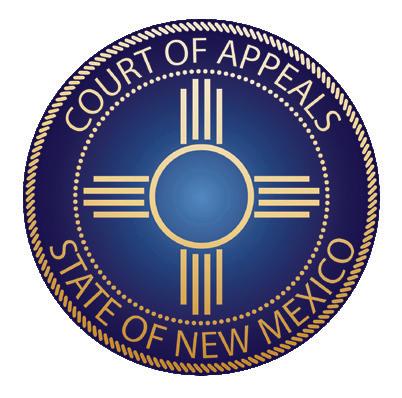
The judges of the Court of Appeals selected Jennifer L. Attrep as their Chief Judge on January 17, 2023.
Judge Jennifer L. Attrep was appointed to the Court of Appeals in 2018. Judge Attrep was raised in Los Alamos and is a graduate of Los Alamos High School. In 1999, she received a B.A. in Economics and Government from the College of William & Mary, summa cum laude. In 2006, she received a J.D. from the University of Virginia School of Law, where she served as the Managing Editor of the Virginia Law Review. Judge Attrep clerked for the Honorable Richard J. Leon in the U.S. District Court for the District of Columbia. Prior to returning home to New Mexico, Attrep practiced for several years at Williams & Connolly, LLP in Washington, D.C. on complex civil and criminal litigation. Judge Attrep then worked in private practice in Santa Fe, focusing on litigation and appellate work. In 2014, Judge Attrep was appointed to the First Judicial District Court, where she presided over a mixed docket of civil, criminal, and family law cases until joining the Court of Appeals. Prior to her legal career, Judge Attrep worked as an economic research analyst at the Federal Reserve Board in Washington, D.C.
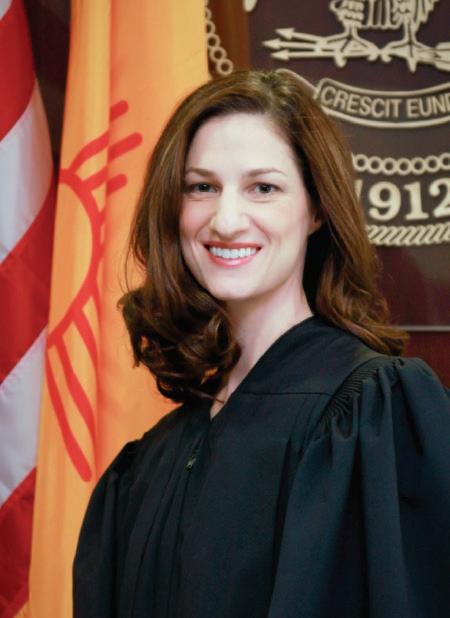
The Professional Development Program offers law practice management services and resources to State Bar of New Mexico members. This includes continuing education courses, “how-to” manuals and workshops, confidential practice consultations, a confidential ethics advisory helpline and infor mation, sample forms, checklists and assessments on best practices for lawyers.
For more information, please visit www.sbnm.org/PDP or call the program at 505-797-6079.
Bar Bulletin -February 8, 2023 - Volume 62, No. 3 9
New Court of Appeals Chief Judge Jennifer Attrep is sworn-in by outgoing Chief Judge J. Miles Hanisee (Photo courtesy of the N.M. Court of Appeals)
P R OFESSIONALDEVELOPMENTPROGR A M Relevant Resources for Attorney s State Bar of New Mexico Est. 1886
Equity in Justice
The Importance of Personal Pronouns
By Amanda Parker, PhD Equity in Justice Director
You may have noticed that many of your co-workers and friends are adding pronouns to their signature line or introducing themselves with their names followed by which pronouns they use. It can be confusing when new practices to honor and acknowledge groups that have been underrepresented and excluded emerge, but learning to do so despite discomfort is an important step to building an accountable and inclusive legal community. This article will explain what personal pronouns are and how to use them if you choose to.
Personal pronouns are the pronouns we use to refer to ourselves and other people. For example, I am a woman who uses she, her, and hers. Nonbinary, gender non-nonconforming, and some transgendered people use they, them, and theirs to refer to themselves. According to data from 2021, 1.2 million people identify as nonbinary, and it is important to include them in discussions of bias, harassment, discrimination and fair treatment in courts and other legal settings1.
Some Definitions
One place to start is understanding some of the common terms and definitions that are used to describe gender. These definitions are directly from the Human Rights Campaign https://www.hrc.org/resources/glossary-of-terms
❱ Sexual orientation: An inherent or immutable enduring emotional, romantic or sexual attraction to other people. Note: an individual’s sexual orientation is independent of their gender identity.
❱ Cisgender: A term used to describe a person whose gender identity aligns with those typically associated with the sex assigned to them at birth.
❱ Gender expression: External appearance of one’s gender identity, usually expressed through behavior, clothing, body characteristics or voice, and which may or may not conform to socially defined behaviors and characteristics typically associated with being either masculine or feminine.
❱ Gender-fluid: A person who does not identify with a single fixed gender or has a fluid or unfixed gender identity.
❱ Gender identity: One’s innermost concept of self as male, female, a blend of both or neither – how individuals perceive themselves and what they call themselves. One’s gender identity can be the same or different from their sex assigned at birth.
❱ Gender non-conforming: A broad term referring to people who do not behave in a way that conforms to the traditional expectations of their gender, or whose gender expression does not fit neatly into a category. While many also identify as transgender, not all gender non-conforming people do.
❱ Non-binary: An adjective describing a person who does not identify exclusively as a man or a woman. Non-binary people may identify as being both a man and a woman, somewhere in between or as falling completely outside these categories. While many also identify as transgender, not all non-binary people do. Non-binary can also be used as an umbrella term encompassing identities such as agender, bigender, genderqueer or gender-fluid.
❱ Transgender: An umbrella term for people whose gender identity and/or expression is different from cultural expectations based on the sex they were assigned at birth. Being transgender does not imply any specific sexual orientation. Therefore, transgender people may identify as straight, gay, lesbian, bisexual, etc.
But “they” is plural not singular, so I am confused. Yes, this newer usage of “they” can be confusing but using “they” in reference to an individual has long been part of common usage. For example:
Someone left their pencil on the desk.
I don’t know who is hosting this dinner party or what they are serving.
10 Bar Bulletin - February 8, 2023 - Volume 62, No. 3
My friend was sick, so I went to their house.
It can take some getting used to, so practice referring to people who use they, them out loud.
Can I assume someone’s pronouns by looking at them?
No, you cannot, which is why the practice of asking for someone’s pronouns and posting your own matters. You can introduce yourself verbally by saying, “My name is Amanda, and I use she/her pronouns.” This invites others to share their pronouns. You can also post them on your signature line and/or in your zoom ID.
Cisgendered people share their pronouns in order to normalize pronoun usage. If we don’t, many times only people who are non-binary share them. One way you can open a meeting is by saying, “Please let us know your pronouns so that everyone feels welcome in this space.” In some spaces I have been in, the facilitator or person running the meeting has required everyone to post their pronouns in a zoom or to introduce themselves with them. People should be invited but not required to give pronouns because you could be outing someone who is nonbinary or creating tension for some people who are still figuring out their pronouns.
“Hello, I use she/her pronouns, please feel free to share yours with me!”
What is “misgendering”?
This is not just as issue of interpersonal communication. There are legal consequences for not respecting the civil rights of trans and nonbinary people. According to LGBTQ Bar Chair, Gina Dennis, “Misgendering, which is the intentional use of the wrong pronouns to harm an LGBTQ+ person, results in deep legal consequences such as discrimination lawsuits as well as violations of Judicial Code in New Mexico.”
What if I mess up? What if I use the wrong pronouns?
If you misgender someone you can use the correct pronoun going forward or quickly correct yourself. For example, “She, I mean they. I apologize.” And then move on.
Don’t belabor or make it about yourself, like this: “I am so, so sorry I misgendered you. I don’t understand all this, and ‘they’ is so hard to get used to. I am really trying to get this right, so I am so sorry. I just wasn’t raised with all of this, and people are always coming up with new things.”
If the mistake is in writing, just correct the document and continue to use the appropriate pronouns.
“They” is singular, but uses plural subject/verb agreement:
Correct: They are coming to court on Monday.
Incorrect: They is coming to court on Monday.
Reach out if you have questions
I hope that you found this information helpful and remember that you don’t have to be perfect to engage in equity work. There are many educators and trainers, me included, who can handle questions in a way that recognizes that we are all still learning.
Below are some additional resources that you can reach out to for more information.
Resources
Glossary of Terms - Human Rights Campaign: https://www.hrc.org/resources/glossary-of-terms
The New Mexico LGBTQ Bar: NMLGBTQBARASSN@gmail.com https://www.glsen.org/
Nonbinary Resources | PFLAG: https://pflag.org/NonbinaryResources
Transgender Resource Center of New Mexico: 505-200-9086 • https://tgrcnm.org
LGBTQ Resource Center UNM: http://lgbtqrc.unm.edu
New Mexico State University LGBT+ Resource Center: https://studentlife.nmsu.edu/lgbt/index.html
Endnote
1 https://williamsinstitute.law.ucla.edu/press/lgbtq-nonbinary-press-release/
Questions? Email Amanda.Parker@sbnm.org
Bar Bulletin -February 8, 2023 - Volume 62, No. 3 11
Advance Opinions
the means by which liability can be imputed to the principal is destroyed.” Valdez v. R-Way, LLC, 2010-NMCA-068, ¶ 4, 148 N.M. 477, 237 P.3d 1289. Thus, Mountain States cannot be held vicariously liable for the acts and omissions of Pat Campbell. See Kinetics, Inc. v. El Paso Prods. Co., 1982-NMCA-160, ¶ 29, 99 N.M. 22, 653 P.2d 522 (“Vicarious liability is based on a relationship between the parties . . . under which it has been determined as a matter of policy that one person should be liable for the act of the other.” (internal quotation marks and citation omitted)).
{28} We therefore hold that OR&L’s release of Pat Campbell is alternative basis for affirming the district court’s grant of summary judgment to Mountain States regarding any actions of Pat Campbell that could be imputed to Mountain States. We now address OR&L’s claims for direct liability.
C. The Implied Covenant of Good Faith and Fair Dealing
{29} “Under the common law, all insurance contracts include an implied covenant of good faith and fair dealing that the insurer will not injure its policyholder’s right to receive the full benefits of the contract.” Sherrill v. Farmers Ins. Exch., 2016-NMCA-056, ¶ 34, 374 P.3d 723 (internal quotation marks and citation omitted). “[T]he implied covenant of good faith and fair dealing cannot be used to override express provisions in a written contract.” Smoot v. Physicians Life Ins. Co., 2004-NMCA-027, ¶ 10, 135 N.M. 265, 87 P.3d 545. “Thus, it is breached only when a party seeks to prevent the contract’s performance or to withhold its benefits from the other party.” Azar, 2003-NMCA062, ¶ 51.
{30} OR&L argues that Mountain States breached the implied covenant of good faith and fair dealing in three ways. First, OR&L argues that, per Barth , 1994NMSC-067, insurers have a nondelegable duty to ensure the insured’s reasonable expectations of coverage when denying coverage due to a policy exclusion and that Mountain States’ failure to consider its reasonable expectations violates the UIPA. Second, OR&L argues that Mountain States violated both the UIPA and its nondelegable duty to investigate by not investigating the cause of the fire, or whether OR&L had notice of the torch-down roofing exclusion. Third, OR&L argues that Mountain States did not attempt to resolve OR&L’s claims in good faith in violation of the UIPA. We disagree, and we explain.
1. The Reasonable Expectations Doctrine
{31} In Barth, the New Mexico Supreme Court held that “[w]hen deciding whether an exclusionary clause is effective to nullify coverage under an insurance policy,
we give consideration to the reasonable expectations of the insured.” 1994-NMSC067, ¶ 14. Nothing in Barth requires the insurer to consider the insured’s reasonable expectations. Rather, the “reasonable expectations” doctrine is a judicial doctrine applied by the courts when interpreting an insurance policy. See Rummel v. Lexington Ins. Co., 1997-NMSC-041, ¶ 22, 123 N.M. 752, 945 P.2d 970 (“The court’s construction of an insurance policy will be guided by the reasonable expectations of the insured.”). OR&L identifies no authority, and we are aware of none, that requires an insurer to consider the reasonable expectations of the insured when determining whether coverage applies to a particular claim. Stated differently, the doctrine guides construction of a policy in circumstances where such is at issue or where given provisions require a court to ascertain their meaning. But to reiterate, it is not a doctrine applicable to insurers themselves, nor does it govern what insurers must cover in an insurance policy. {32} As such, the “reasonable expectations” doctrine is not applicable in this case. The doctrine may be invoked when (1) “the language of an insurance policy or representations of [an] insurance company lead [the] insured to reasonably expect coverage”; (2) the language of the policy is ambiguous; or (3) “when the dynamics of the insurance transaction make way for its application.” Rehders v. Allstate Ins. Co., 2006-NMCA-058, ¶ 33, 139 N.M. 536, 135 P.3d 237 (internal quotation marks and citation omitted). However, “[u]nambiguous insurance policy exclusions are to be enforced unless they are contrary to law or public policy.” Berlangieri v. Running Elk Corp., 2002-NMCA-046, ¶ 15, 132 N.M. 92, 44 P.3d 538. The torch-down roofing exclusion is not ambiguous, nor is it contrary to law or public policy. It is true that the doctrine of reasonable expectations is not limited to disputed policy language and that the dynamics of the insurance transaction often affect the insured’s reasonable expectations. Barth, 1994-NMSC067, ¶ 15. However, unlike the defendant in Barth, OR&L had notice of the torch-down roofing exclusion from the ten-page policy document, and therefore Mountain States could rely on the exclusion to deny OR&L’s claim. See id. ¶¶ 18-20 (holding that the defendant had a reasonable expectation of coverage because the insured was (1) uninformed about the nature of what he purchased, (2) did not receive the policy before the incident leading to a claim for coverage arose, and (3) had no notice the policy contained an exclusion precluding coverage for the incident).
{33} We therefore affirm the district court’s dismissal of OR&L’s claims for violation of the implied covenant of good faith
and fair dealing regarding the reasonable expectations doctrine. We also affirm the dismissal of OR&L’s UIPA claims regarding its reasonable expectations because the UIPA does not obligate insurers to consider an insured’s reasonable expectations of coverage. See generally § 59A-16-20.
2. The Duty to Investigate {34} Insurers are required to promptly investigate and process an insured’s claim for coverage. See § 59A-16-20(C). “In this context, insurer conduct is measured by basic standards of competency and the insurer is charged with knowledge of the duty owed to its insured.” Sherrill, 2016NMCA-056, ¶ 39 (omission, internal quotation marks, and citation omitted).
{35} There is no evidence in the record that Mountain States violated its duty to investigate or otherwise sought to prevent the policy’s performance or withhold its benefits. OR&L’s policy is clear that there is no coverage for torch-down roofing. After OR&L submitted its claim for coverage, Mountain States inquired as to the cause of the fire, informed OR&L that its policy did not cover torch-down roofing, and confirmed that the policy exclusion still precluded coverage after OR&L expressed that it was unaware of the exclusion. Thus, once Mountain States performed its investigation and determined OR&L lacked coverage for the fire, there was no other performance due under the contract.
{36} To the extent OR&L argues that Mountain States violated a nondelegable duty to investigate whether OR&L had notice of the torch-down roofing exclusion under the Salas cases, we disagree. As we have explained, neither Salas case imposes such a duty on insurers. The Salas cases only require insurers to give reasonable notice of the contents of their policy, and Mountain States met that requirement. See Salas I, 2007-NMCA-161, ¶ 38; Salas II, 2009-NMSC-005, ¶ 13. Mountain States had no duty to consider OR&L’s reasonable expectations of coverage when processing its claim, had no duty to investigate the fire once it determined OR&L’s claim was excluded from coverage, and had no duty to investigate whether OR&L had notice of the torch-down roofing exclusion.
{37} We therefore affirm the district court’s dismissal of OR&L’s claims for violation of the implied covenant of good faith and fair dealing regarding the duty to investigate. Based on the forgoing, we also affirm the dismissal of OR&L’s UIPA claims related to its reasonable expectations and Mountain States’ duty to investigate. The UIPA does not require insurers to investigate the cause of an incident leading to a claim when there is no coverage. See generally § 59A-16-20.
3. Resolution of OR&L’s Claims
{38} Finally, we briefly address OR&L’s
12 Bar Bulletin - February 8, 2023 - Volume 62, No. 3 http://www.nmcompcomm.us/
continued from page 8
Advance Opinions
assertion that Mountain States failed to attempt in good faith to resolve OR&L’s claims and the claims against it. The UIPA requires insurers to attempt “in good faith to effectuate prompt, fair and equitable settlements of an insured’s claims in which liability has become reasonably clear.” Section 59A-16-20(E). However, an insured cannot raise a claim of bad faith based on an insurer’s failure to pay a covered claim unless the insured can establish that coverage exists. Haygood v. United Servs. Auto. Ass’n, 2019-NMCA-074, ¶ 21, 453 P.3d 1235. OR&L has failed to establish coverage for claims regarding torch-down roofing; therefore, OR&L’s argument that Mountain States did not attempt to resolve its claim or any other claims in good faith is unavailing. Accordingly, we affirm the dismissal of OR&L’s claims that Mountain States violated the implied covenant of good faith and fair dealing or the UIPA by failing to promptly effectuate claims resolution.
D. Mountain States’ Alleged Misrepresentations
{39} Under the UPA, an unfair or deceptive practice is “a false or misleading oral or written statement, visual description or other representation of any kind knowingly made in connection with the sale, lease, rental or loan of goods or services or in the extension of credit or in the collection of debts by a person in the regular course of the person’s trade or commerce, that may, tends to or does deceive or mislead any person.” Section 57-12-2(D). To establish a UPA violation, a plaintiff must show four elements: “(1) the defendant made a false statement, (2) the defendant made the statement in connection with the sale of services and knew that the statement was false, (3) the defendant made the statement in the regular course of trade or commerce, and (4) the statement was one which may, tends to, or does deceive or mislead any person.” Dellaira v. Farmers Ins. Exch., 2004-NMCA-132, ¶ 20, 136 N.M. 552, 102 P.3d 111 (alteration, omission, internal quotation marks, and citation omitted).
“The ‘knowingly made’ requirement is met if a party was actually aware that the statement was false or misleading when made, or in the exercise of reasonable diligence should have been aware that the statement was false or misleading.” Stevenson v. Louis Dreyfus Corp., 1991-NMSC-051, ¶ 17, 112 N.M. 97, 811 P.2d 1308.
{40} OR&L argues that Mountain States made several material misrepresentations that merit reversal on different grounds. OR&L appears to contend that Mountain States violated the UPA by (1) making material misrepresentations in its denial letter, and (2) that the ten-page policy document deceived both Pat Campbell and OR&L. OR&L similarly argues that
Mountain States violated the UIPA by misrepresenting OR&L’s policy provisions in its denial letter based on the torch-down roofing exclusion, and that the denial letter failed to address OR&L’s constructive notice of the exclusion in violation of the UIPA, which parallels OR&L’s argument that Mountain States mended its hold by asserting OR&L’s actual and constructive notice of the torch-down roofing exclusion in defending this litigation.
{41} We disagree. OR&L fails to point us to any record evidence demonstrating that Mountain States made any false statements or material misrepresentations. As we have determined, Mountain States is entitled to rely on the torch-down roofing exclusion because the ten-page document OR&L received contained notice of that exclusion. Mountain States cited the exclusion when denying OR&L’s claim and did not make a false statement or misrepresent any policy provisions when denying coverage. Thus, OR&L’s UPA claims must fail because it cannot show the first element required to establish a violation of the UPA. See § 5712-2(D). We similarly affirm the dismissal of OR&L’s UIPA claims related to Mountain States’ alleged material misrepresentations, because OR&L has failed to establish that Mountain States misrepresented facts or policy provisions in violation of the UIPA. See § 59A-16-20(A).
{42} Finally, based on the forgoing, we conclude that the mend the hold doctrine is not applicable to Mountain States’ conduct in defending this case. The mend the hold doctrine precludes an insurer from asserting one reason to deny coverage of a claim and then raising a different reason for denial as a defense once litigation occurs. See Irwin v. Sovereign Camp of Woodmen of the World, 1910-NMSC-023, ¶ 4, 15 N.M. 365, 110 P. 550. Mountain States has consistently asserted its belief that the torch-down roofing exclusion precludes coverage, both before and throughout the duration of this lawsuit. Ms. Kroner expressed that the exclusion precluded coverage for the fire when she spoke to OR&L, Mountain States’ denial letter relies on the torch-down roofing exclusion, and Mountain States asserted the exclusion as a counterclaim. While Mountain States explains its reliance on the exclusion in more detail in defending this lawsuit, we are aware of no authority, and OR&L cites none, that precludes an insurer from explaining the basis of its claims decision and asserting the insured’s notice of that exclusion in response to litigation.
{43} A s expressed above, whether an insured has notice is a factual and legal question to be decided by the courts, not a claims denial question an insurer must consider when denying a claim for coverage. We therefore determine that Moun-
tain States did not mend its hold and affirm the district court’s order denying OR&L’s motion in limine regarding the mend the hold doctrine.
E. Damages and Mitigation
{44} “In an ordinary lawsuit, denial of a motion for summary judgment is not appealable.” Doe v. Leach, 1999-NMCA-117, ¶ 12, 128 N.M. 28, 988 P.2d 1252. “Where a motion for summary judgment is based solely on a purely legal issue which cannot be submitted to the trier of fact, and the resolution of which is not dependent on evidence submitted to the trier of fact . . . the issue should be reviewable on appeal from the judgment.” Gallegos v. State Bd. of Educ., 1997-NMCA-040, ¶ 10, 123 N.M. 362, 940 P.2d 468.
{45} Here, the district court found that OR&L suffered no damages in its order denying Mountain States’ motion for summary judgment based on OR&L’s failure to mitigate. OR&L challenges the district court’s finding that it suffered no damages as a matter of law. However, because Mountain States’ motion for summary judgment depended on an issue that needed resolution by the trier of fact—the availability of work and whether such work was declined—there is no appealable finding regarding damages.
{46} Regardless, it is unnecessary for us to review the issue of damages to resolve this appeal. Because we have determined that Mountain States was legally entitled to rely on the torch-down roofing exclusion to deny OR&L’s claims, whether OR&L has suffered a monetary loss arising from the fire is irrelevant because Mountain States is not liable for that loss. It is not our practice to address issues unnecessary for the disposition of an appeal. See, e.g., Sandoval v. Cortez, 1975-NMCA-088, ¶ 16, 88 N.M. 170, 538 P.2d 1192 (“Since we are affirming this case on points regarding liability it will be unnecessary for us to review the point regarding damages.”).
{47} It is true that a plaintiff may seek recovery under the UPA without proof of actual damages. See NMSA 1978, § 5712-10(B) (2005) (authorizing recovery of “actual damages or the sum of one hundred dollars ($100), whichever is greater”). But because OR&L’s UPA claims fail, we similarly need not address OR&L’s claim for damages under the UPA. We therefore decline to further address the issue of damages.
II. Mountain States’ Cost Bill {48} “In all civil actions or proceedings of any kind, the party prevailing shall recover his costs against the other party unless the court orders otherwise for good cause shown.” NMSA 1978, § 39-3-30 (1966). Similarly, our rules state “[u]nless expressly stated either in a statute or in these rules, costs . . . shall be allowed to the prevailing
Bar Bulletin - February 8, 2023 - Volume 62, No. 3 13 http://www.nmcompcomm.us/
Advance Opinions
party unless the court otherwise directs.” Rule 1-054(D)(1) NMRA. As the prevailing party, Mountain States is “entitled to a presumption that it should be awarded costs.” Key v. Chrysler Motors Co., 2000NMSC-010, ¶ 6, 128 N.M. 739, 998 P.2d 575. The burden is on the losing party to demonstrate that an award of costs would be unjust or that other circumstances justify a denial or reductions of costs. Apodaca v. AAA Gas. Co., 2003-NMCA-085, ¶ 103, 134 N.M. 77, 73 P.3d 215. “The trial court has discretion in assessing costs, and its ruling will not be disturbed on appeal unless it was an abuse of discretion.” Key, 2000-NMSC-010, ¶ 7 (internal quotation marks and citation omitted).
{49} OR&L argues that the district court abused its discretion in awarding costs in two ways. First, it asserts the district court erred in awarding costs for an expedited deposition transcript of OR&L’s expert because the district court did not cite the opinions in that transcript in its summary judgment order. Second, OR&L argues the district court should not have awarded expert costs for Mountain States’ expert because Mountain States sought non-recoverable costs, the expert’s rates were not reasonable rates for Southern New Mexico, the bill included block billing, and the district court likewise did not cite that expert’s opinion in its summary judgment order.
{50} We disagree. The district court entered a detailed twelve-page order awarding fees and costs to Mountain States. Specifically, the district court found that both experts were necessary to litigation, OR&L did not support its argument that Defendants’ expert fees or block billing was unreasonable, and that staff expenses and document production fees are not unrecoverable costs if those fees are assessed in preparation for the creation of an expert’s opinion.
{51} The district court affirmatively explained its reasons for awarding fees and
costs in a manner that is not contrary to logic or reason. See Stansell v. New Mexico Lottery, 2009-NMCA-062, ¶ 14, 146 N.M. 417, 211 P.3d 214 (“A trial court abuses its discretion when its decision is contrary to logic and reason.” (internal quotation marks and citation omitted)). Further, OR&L does not point us to any authority or evidence in the record demonstrating that the district court’s award of Mountain States’ costs was in error. We therefore cannot say the district court abused its discretion in awarding costs for the expedited deposition transcript and Mountain States’ expert.
{52} Finally, OR&L argues that the district court failed to consider the chilling effect that Mountain States’ cost bill would have on future UPA/UIPA claimants. This assertion is contrary to the plain language of the UPA and UIPA. The UPA explicitly directs the district court to award fees and costs to a party charged with a violation of the act if it determines the claim is groundless. Section 57-12-10(C). Similarly, under the UIPA, “[c]osts shall be allowed to the prevailing party unless the court otherwise directs.” NMSA 1978, § 59A-16-30 (1990); see H-B-S P’ship v. AIRCOA Hosp. Servs., Inc., 2008-NMCA-013, ¶ 28, 143 N.M. 404, 176 P.3d 1136 (recognizing that staff expenses and document-production costs incurred in connection with the creation of an expert’s opinion are allowable).
{53} Therefore, there is no chilling effect implicated in an award of costs to UPA or UIPA defendants, and OR&L’s argument is without merit. See, e.g., Key, 2000-NMSC010, ¶ 16 (concluding that the Legislature did not intend to limit costs to prevailing defendants based on a theoretical chilling effect based on the language of the Motor Vehicle Dealers Franchising Act).
CONCLUSION
{54} For the above reasons, we affirm the district court’s order granting summary judgment in favor of Mountain States and dismissing OR&L’s claims for violations of
the implied covenant of good faith and fair dealing, the UPA, and the UIPA. We also affirm the district court’s order awarding costs to Mountain States.
{55} IT IS SO ORDERED.
JACQUELINE R. MEDINA, Judge
I CONCUR:
J. MILES HANISEE, Chief Judge
KRISTINA BOGARDUS, Judge (specially concurring).
BOGARDUS, Judge (specially concurring).
{56} I concur in the result reached by the majority, except for the section addressing the implied covenant of good faith and fair dealing. Because OR&L in this instance received the coverage contracted for, it is my view that the Court need not reach any arguments related to this issue. As the majority states “the implied covenant of good faith and fair dealing cannot be used to override express provisions in a written contract,” Smoot, 2004-NMCA-027, ¶ 10, and therefore this implied covenant is only breached “when a party seeks to prevent the contract’s performance or to withhold its benefits from the other party.” Azar, 2003-NMCA-062, ¶ 51. It is clear that the coverage purchased by OR&L in this case included express provisions that limited coverage. And there are no facts to support a contention that Mountain States unreasonably withheld its coverage decision or failed to properly investigate the claim, which might support a claim for lack of good faith and fair dealing even in light of the policy exclusions. See Haygood, 2019-NMCA-074, ¶¶ 22-23 (noting that a bad faith claim need not depend on the existence of coverage but may also arise where the insurer failed to deal fairly in claims handling). Because it is unnecessary to discuss the implied covenant of good faith and fair dealing to reach this Court’s decision here, I do not concur in this portion of the opinion.
KRISTINA BOGARDUS, Judge
14 Bar Bulletin - February 8, 2023 - Volume 62, No. 3
http://www.nmcompcomm.us/
Advance Opinions
From the New Mexico Supreme Court and Court of Appeals
From the New Mexico Court of Appeals
Opinion Number: 2022-NMCA-036
No: A-1-CA-39044 (filed April 26, 2022)
DANA MCGARRH a/k/a DANA ALLEN MCGARRH, Petitioner-Appellant, v. STATE OF NEW MEXICO, Respondent-Appellee.
Daylene A. Marsh, District Judge
The Law Office of Scott M. Davidson, Ph.D.
Scott M. Davidson Albuquerque, NM
for Appellant
OPINION
WRAY, Judge.
{1} Petitioner, Dana McGarrh, appeals the district court’s denial of his Rule 5-803 NMRA post-conviction petition and motion to reconsider. We reverse in part and affirm in part.
BACKGROUND
{2} Between 1989 and 2001, Petitioner pleaded guilty three times to misdemeanor driving while intoxicated (DWI) charges in San Juan County municipal courts. In 2003, Petitioner pleaded to a fourth DWI in the Eleventh Judicial District Court, which resulted in a fourth degree felony conviction, pursuant to NMSA 1978, Section 66-8-102(G) (2002, amended 2016).1
Petitioner was sentenced to eighteen months incarceration, and he completed his sentence in March 2006. In 2020, Petitioner filed a Rule 5-803 petition (Petition) and sought to invalidate all four pleas, because he contended that the judges in each plea hearing “never articulated on the record, in spite of clear rule requirements, what the State must prove in order to convict Petitioner McGarrh of any of the charges at issue.” The district court summarily dismissed the Petition for three reasons: (1) lack of jurisdiction to review the three misdemeanor pleas, (2) the Peti-
Hector H. Balderas, Attorney General Emily Tyson-Jorgenson, Assistant Attorney General Santa Fe, NM
for Appellee
tion was untimely, and (3) the pleas were knowingly, voluntarily, and intelligently entered. Petitioner appeals.
DISCUSSION
{3} Petitioner seeks post-conviction relief under Rule 5-803, and we therefore consider his arguments within the confines of that rule. We briefly review the procedural steps outlined by Rule 5-803 in order to provide the context for Petitioner’s arguments.
{4} Under Rule 5-803(A) a “petition to set aside a judgment and sentence may be filed in the district court of the jurisdiction which rendered the judgment by one who has been convicted of a criminal offense, and who is not in custody or under restraint as a result of such sentence.” Rule 5-803(B) permits the correction of “convictions obtained in violation of the constitution or laws of the United States or the State of New Mexico,” including motions to withdraw pleas that are filed by persons who are not in custody. See also Rule 5-803(A) (applying the rule to persons who are not in custody); State v. Yancey, 2021-NMCA-009, ¶ 12, 484 P.3d 1008 (“A person who is convicted based on a plea that is not knowing and voluntary suffers a deprivation of the constitutional right to due process.”). Petitions must “be filed within a reasonable time after completion of the petitioner’s sentence.” Rule 5-803(C). The district court shall sum-
http://www.nmcompcomm.us/
marily dismiss a petition if “it plainly appears . . . that the petitioner is not entitled to relief as a matter of law.” Rule 5-803(F) (1). The rule sets forth a procedure for a revised petition, Rule 5-803(F)(1), but ultimately, if summary reversal is “not appropriate” the district court is required to order a response from the state. Rule 5-803(F)(2). After a response, the district court may decide the issues and/or hold a preliminary disposition hearing, at which the district court shall “determine whether an evidentiary hearing is required[,]” and if no evidentiary hearing is required, “may dispose of the petition.” Rule 5-803(F) (3). In the present case, the district court summarily dismissed the Petition on its face without a response from the State or a hearing.
{5} Petitioner challenges each of the district court’s three bases for summary dismissal of his Rule 5-803 Petition. We address each argument in turn.
I. The District Court’s Rule 5-803 Jurisdiction
to Review Misdemeanor
Pleas
{6} The district court determined that it did not have jurisdiction to set aside the three DWI pleas taken in the Farmington and Aztec municipal courts, because Rule 5-803 only “provides relief from a judgment rendered in [d]istrict [c]ourt.” Petitioner argues that the district court “erred as a matter of law” based on the plain language of Rule 5-803 because Rule 5-803 permits the filing of a petition in the district court of the jurisdiction that rendered the judgment, and the three plea judgments were entered in municipal courts that were all located in the Eleventh Judicial District Court. The parties agree that Rule 5-803(A) governs the district court’s jurisdiction. We review the jurisdictional question de novo, see State v. Barraza, 2011-NMCA-111, ¶ 5, 267 P.3d 815, and we agree with Defendant.
{7} Rule 5-803(A) requires petitions to be “filed in the district court of the jurisdiction which rendered the judgment” and is not limited to pleas made in district courts. See Ramirez v. State, 2014-NMSC-023, ¶¶ 3, 5, 333 P.3d 240 (discussing a district court’s post-conviction review of a plea entered in magistrate court). Petitioner’s first three DWI convictions were entered in municipal courts located in San Juan County, and San Juan County is part of the Eleventh Judicial District Court. NMSA 1978, § 34-6-1(K) (1992). Petitioner filed the 2020 Petition in the Eleventh Judicial District Court. Because the three prior misdemeanor DWI convictions were en-
Bar Bulletin - February 8, 2023 - Volume 62, No. 3 15
APPEAL FROM THE DISTRICT COURT OF SAN JUAN COUNTY
1 All references to Section 66-8-102 in this opinion are to the 2002 version of the statute.
Advance Opinions
{14} Petitioner contends that his fourth DWI plea (Fourth Plea) and his first three DWI pleas (Misdemeanor Pleas) were void, and not knowing and voluntary, because he argues that the records for those pleas fail to show that the judges who took the pleas advised Petitioner of the essential elements of the charged crime and ensured he understood those elements. We consider the Fourth Plea and the Misdemeanor Pleas separately.
A. The Fourth Plea
{15} The district court determined that the Fourth Plea was knowing and voluntary because “Petitioner acknowledged that he understood his rights[ and] the maximum length of sentence he was facing.” Petitioner faults the Fourth Plea colloquy for failure to identify the “essential elements of each of the charges” on the record. This Court recently considered the validity of a plea and carefully explained the requirements for a plea colloquy. See Yancey, 2021-NMCA-009. In Yancey, this Court began our analysis “by examining how the law defining fraud and embezzlement relate[d] to the facts of [the d]efendant’s cases—a relationship that [made] the charges against [the defendant] complex.” Id. ¶ 14. During the plea colloquy, the district court did not “engage [the d]efendant in any discussion regarding the nature of the charges.” (alteration, internal quotation marks, and citation omitted). Id. ¶ 15. Instead, the district court asked whether the defendant “understood the allegations [against him] in the criminal information[s]” and whether he “acknowledged and agreed that the [s]tate had some evidence to prove his guilt of all the charges.” Id. ¶ 5 (alterations and internal quotation marks omitted). Each time, the defendant answered in the affirmative. Id. We reasoned that this “formulaic exchange” did not fulfill the district court’s obligation under Rule 5-303, because the defendant’s affirmative responses provided no “basis for concluding that [the d]efendant actually understood how his conduct satisfied the elements of the charges against him.” Id. ¶ 15. The Fourth Plea colloquy in the present case does not raise the same concerns.
{16} The “nature of the charge” against Petitioner in 2003, and the essential elements, were not as complex as those in Yancey. The essential elements included the following: driving in New Mexico, while under the influence of intoxicating liquor, with a blood or breath alcohol concentration of eight one-hundredths (.08) or more. See § 66-8-102(A), (C). At the plea hearing, the district court engaged Petitioner in the following exchange regarding the nature of the charges:
JUDGE: Tell me what you did that brings you before the court today to enter a plea of guilty to one count of driving under the influence of intoxicating liquor or drugs and driving while license is suspended or revoked.
PETITIONER: On February the 24th of this year I was pulled over and arrested for driving under the influence of alcohol while on a suspended license.
JUDGE: You acknowledge that you were drinking?
PETITIONER: Yes, your honor.
JUDGE: And they did give you a breath test? Or did you refuse to take the breath test?
PETITIONER: No, I took the breath test.
JUDGE: And what did it indicate your alcohol content was?
PETITIONER: I believe it was a .17 The district court did not recite the elements of the DWI charge, but unlike the defendant in Yancey, Petitioner’s responses at the plea hearing provide a basis for concluding that he understood that having an alcohol content of .17 while driving satisfied the elements of the DWI charge, to which he pleaded guilty. Compliance with Rule 5-303(F) “does not turn on whether the court strictly adhered to a script, but instead on whether the court determined by some means that the defendant actually understood the nature of the charges.” Yancey, 2021-NMCA-009, ¶ 13 (alterations, internal quotation marks, and citations omitted). The Fourth Plea colloquy establishes that Petitioner “actually understood how his conduct satisfied the elements of the charges against him.” Id. ¶ 15. Because the record of the plea colloquy demonstrates that the Fourth Plea was knowing and voluntary, the district court did not abuse its discretion in summarily dismissing the Rule 5-803 post-conviction Petition as to the Fourth Plea.
B. The Misdemeanor Pleas
{17} The district court did not directly address the validity of the Misdemeanor Pleas. Instead, the district court relied on its jurisdictional determination and further found that “Petitioner’s agreement appears to be moot, for, Petitioner stipulated that the convictions were valid at sentencing.” The district court’s finding appears to refer to the Fourth Plea colloquy, at which Petitioner’s counsel acknowledged the Misdemeanor Pleas. Responding to the district court’s analysis, Petitioner
argues that (1) the acknowledgment of the Misdemeanor Pleas at the Fourth Plea colloquy cannot, post-plea, establish that the Rule 5-303 requirements were met at the time the challenged plea was entered; and (2) an attorney “cannot substitute for the defendant in a plea colloquy.” We need not evaluate the district court’s reasoning, because we conclude that Petitioner failed to meet his burden to establish that the Misdemeanor Pleas were not knowing and voluntary. See Pacheco, 2008-NMCA-059, ¶¶ 7-9 (considering a collateral attack on a plea and assigning to the defendant the burden to prove “some error occurred that would require it to be considered void”). The district court was therefore “right for any reason” in summarily dismissing the Petition as to the Misdemeanor Pleas. State v. Vargas, 2008-NMSC-019, ¶ 8, 143 N.M. 692, 181 P.3d 684; see id. (allowing affirmance “on grounds not relied upon by the district court if those grounds do not require us to look beyond the factual allegations that were raised and considered below” (internal quotation marks and citation omitted)). We explain, beginning with the slim record of the Misdemeanor Pleas.
{18} Two of the prior pleas were entered in the Farmington municipal court in 1989 and 1992, and the third was entered in the Aztec municipal court in 2001. There were no court records available for the two Farmington pleas and limited court records available for the Aztec plea. As a result of the absent records, Petitioner attached a self-sworn affidavit to the Petition, and testified regarding the Farmington pleas, “I do not recall the judge enumerating the elements of the offense, asking me if I understood those elements, or asking if my attorney had explained them to me.” As to the Aztec plea, Petitioner testified both that he did “not recall” the judge instructing him on the elements or making sure he understood them and that “the judge . . . during the plea colloquy did not advise [him] of the essential elements of the offense, nor did he ask [him] whether [he] understood the essential elements of the offense.” (Emphasis added.)
{19} The conflicting statements regarding the Misdemeanor Pleas in Petitioner’s affidavit—both (1) that he did not recall whether the required information was conveyed, and (2) affirmatively that the information was not conveyed—do not establish an entitlement to relief. Petitioner’s inability to recall whether the plea colloquy requirements were met—when those pleas were entered in 1989, 1992, and 2001—does not alone establish that those pleas were involuntary. See Burton v. State, 1971-NMSC-028, ¶ 17, 82 N.M. 328, 481 P.2d 407 (concluding that an attorney’s failure to recall, after thirteen years, whether the defendant conveyed information did not “constitute a violation
16 Bar Bulletin - February 8, 2023 - Volume 62, No. 3
http://www.nmcompcomm.us/
Advance Opinions
tered in municipal courts located in the Eleventh Judicial District Court, the Petition in the present case was properly filed in the Eleventh Judicial District Court. We therefore reverse the district court’s jurisdictional ruling.
II. The District Court Did Not Abuse Its Discretion in Determining the Petition to Be Untimely
{8} The district court additionally found that the Petition “was not filed timely pursuant to [Rule] 5-803(C)” because it was filed “approximately [fifteen] years after the completion of his sentence” and that no exception excused the late filing. Petitioner contends that the district court had “no basis for dismissing [the P]etition on timeliness grounds.” We first address the appropriate standard of review for the district court’s timeliness determination and then address Petitioner’s arguments.
{9} Generally, we review motions to withdraw pleas for abuse of discretion. See State v. Otero, 2020-NMCA-030, ¶ 3, 464 P.3d 1084. Petitioner argues that we should consider de novo the district court’s determination that the Petition was untimely, because the facts—the date on which the Petition was filed—are undisputed, and a de novo standard applies when “there are no material facts in dispute” and an appeal presents a question of law. Whittington v. State Dep’t of Pub. Safety, 2004-NMCA124, ¶ 5, 136 N.M. 503, 100 P.3d 209. Petitioner maintains that the “summary dismissal of [the P]etition on timeliness grounds is antithetical to the purposes, history and case law interpreting and applying Rule 5-803.” To the extent that Petitioner asks us to consider the meaning of “reasonable time,” as it is used in Rule 5-803, our review is de novo. See Roark v. Farmers Grp., Inc., 2007-NMCA-074, ¶ 50, 142 N.M. 59, 162 P.3d 896 (engaging in rule construction de novo). To the extent, however, that Petitioner maintains the district court improperly applied Rule 5-803 and denied his petition based on timeliness, we review for abuse of discretion. See Otero, 2020-NMCA-030, ¶¶ 3-4 (reviewing timeliness under Rule 5-803 for abuse of discretion). Applying these standards of review, we conclude that (1) Rule 5-803 explicitly includes a limitation on the time to bring a petition, and (2) the district court did not abuse its discretion in determining that Petitioner did not timely file the Petition. We explain.
{10} Petitioner outlines the history of post-conviction, post-release law—from the initial use of writs of coram nobis through the application of Rule 1-060(B) NMRA—to argue that “[u]nder Rule
5-803, there is no specified time limit” to request relief from a void judgment and that long periods of delay have been historically acceptable. For support, Petitioner points to State v. Romero, which observed that there was “no limitation of time within which a motion must be filed under the provisions of Rule [1-060(B) (4)].” 1966-NMSC-126, ¶ 25, 76 N.M. 449, 415 P.2d 837. While the history of coram nobis and Rule 1-060(B) motions may provide important context for how petitions to void a plea evolved, we must consider the provisions of the current rule. See Rule 5-803 comm. cmt. (explaining that Rule 5-803 explicitly “superseded” Rule 1-060(B) “for post-sentence matters involving criminal convictions, including the writ of coram nobis”). In its current iteration, Rule 5-803(C) explicitly requires a petition to “be filed within a reasonable time after the completion of the petitioner’s sentence, unless the court finds good cause, excusable neglect, or extraordinary circumstances beyond the control of the petitioner that justify filing the petition beyond that time.” We therefore reject Petitioner’s contention that because prior procedural mechanisms for post-sentence relief did not impose time requirements, Rule 5-803 must be read similarly. See Otero, 2020-NMCA-030, ¶ 7 (noting the difference in time requirements between Rule 1-060 and Rule 5-803). Rule 5-803(C) requires petitions for post-conviction, outof-custody relief to be brought “within a reasonable time.”
{11} In the present case, the district court found that the Petition was not brought in a reasonable time, fifteen years after the final sentence was completed, and that no Rule 5-803(C) excuse justified the late filing. Petitioner contends that because the district court summarily dismissed without a hearing, he had no “opportunity to demonstrate good cause, excusable neglect, or extraordinary circumstances justifying the timing of [the] Rule 5-803 motion.” We disagree. Petitioner filed a motion to reconsider in the district court, but as it relates to timeliness, he did not request a hearing or identify any evidence that he would have presented at a hearing. Similarly, on appeal, Petitioner has identified no evidence that he could have presented at a hearing to show either that the time he took to file the Petition—fifteen years after he finished serving his fourth sentence—was reasonable or that “good cause, excusable neglect, or extraordinary circumstances” existed. Rule 5-803(C); see id. comm. cmt. (noting that late-filed petitions may be acceptable “because of
the development of serious unforeseen collateral consequences which are beyond the control of the petitioner”). We therefore conclude that the district court did not abuse its discretion in finding that after waiting fifteen years, Petitioner failed to timely bring the Petition.
III. The Validity of the Four Pleas
{12} Petitioner challenges the validity of all four pleas and argues that the judges at all four DWI plea hearings failed to inform Petitioner “on the record the nature of the charges.” As a result, Petitioner contends the district court erred in summarily denying the Petition to set aside the four convictions because the pleas were not knowing and voluntary under New Mexico law. Again, we review the district court’s ruling for abuse of discretion. See Otero, 2020-NMCA-030, ¶ 3. Appellate courts, however, “analyze a district court judge’s discretionary decisions by first, without deferring to the district court judge, deciding whether proper legal principles were correctly applied.” State v. Ferry, 2018-NMSC-004, ¶ 2, 409 P.3d 918. We therefore first turn to consider what is required, as a matter of law, to withdraw a guilty plea.
{13} To withdraw a guilty plea, the petitioner must show that the plea was not “knowing and voluntary.” State v. Garcia, 1996-NMSC-013, ¶ 14, 121 N.M. 544, 915 P.2d 300. A guilty plea may be invalid as a matter of law if the record does not affirmatively show that before the plea was accepted, the procedures in Rule 5-303 NMRA were followed. Garcia, 1996-NMSC-013, ¶¶ 9, 13. In relevant part, Rule 5303(F)(1) 2 states that “[t]he court shall not accept a plea of guilty or no contest without first, by addressing the defendant personally in open court, informing the defendant of and determining that the defendant understands . . . the nature of the charge to which the plea is offered.” State v. Ramirez, 2011NMSC-025, ¶ 9, 149 N.M. 698, 254 P.3d 649 (emphasis, internal quotation marks, and citation omitted); see id. (describing the “nature of the charges” as the “essential elements of the charges” (alteration omitted)). In order for a guilty plea to be “truly voluntary” the defendant must possess “an understanding of the law in relation to the facts.” Yancey, 2021NMCA-009, ¶ 13 (internal quotation marks and citation omitted). Petitioner “bears the burden of proving that some error occurred that would require [the guilty plea] to be considered void.” State v. Pacheco, 2008-NMCA-059, ¶ 9, 144 N.M. 61, 183 P.3d 946.
Bar Bulletin - February 8, 2023 - Volume 62, No. 3 17 http://www.nmcompcomm.us/
2 Rule 5-303 was amended in 2010, but because the amendments since the time the four pleas were taken are not germane to our analysis, we cite the current version of the Rule.
Advance Opinions
of any constitutional or other right which would make [the defendant’s] conviction on a voluntary plea of guilty subject to collateral attack”). Absent additional evidence, or any indication that additional evidence could be available to be presented at an evidentiary hearing, it plainly appeared from the face of the Petition and affidavit that Petitioner
was not entitled to relief as a matter of law and summary dismissal was appropriate. See Rule 5803(F)(1) (“If it plainly appears from the face of the petition, any exhibits, and the prior court proceedings in the case, that the petitioner is not entitled to relief as a matter of law, the court shall summarily dismiss the petition.”).
http://www.nmcompcomm.us/
CONCLUSION
{20} For the reasons stated herein, the district court’s jurisdictional ruling is reversed but the dismissal of the Petition is otherwise affirmed.
{21} IT IS SO ORDERED.
KATHERINE A. WRAY, Judge
WE CONCUR:
KRISTINA BOGARDUS, Judge
GERALD E. BACA, Judge
18 Bar Bulletin - February 8, 2023 - Volume 62, No. 3
CLE PLANNER
Your Guide to Continuing Legal Education
February 8, 2023
WELCOME BACK
The Center for Legal Education has welcomed back members for in-person programs.1 CLE courses continue to be available in remote formats including webinar, teleseminar or on-demand. Refer to online sources for registration and more information.

All visitors to the State Bar Center are encouraged to read the latest COVID information on the CDC website and take actions to keep themselves and others comfortable and healthy as we continue to transition out of the pandemic.
1 Subject to current public health guidelines.
February – March
Programming
Ethics Programming
The Center for Legal Education is a non-profit New Mexico accredited CLE course provider dedicated to providing high-quality, affordable educational programs to the legal community. CLE offers a full range of educational services. For more information, contact us or visit us online.
cleonline@sbnm.org • 505-797-6020
www.sbnm.org/cle
New Mexico State Bar Foundation
Center for Legal Education
INSIDE THIS ISSUE
FEBRUARY – MARCH PROGRAMMING
FEBRUARY 9
Webinar
Workers' Compensation: Settlement Outcomes
1.0 G Noon–1 p.m.
FEBRUARY 10
Teleseminar
Trust in Estate Planning in 2023: A Year of Change & Challenge
1.0 G 11 a.m.–noon
Webinar
Multi-Generational Workplace: Millennials, Gen Z and the Baby Boomers
1.5 EP Noon–1:30 p.m.
FEBRUARY 14
Teleseminar
Due Diligence in Real Estate: How to Conduct and Use
1.0 G 11 a.m.–noon
FEBRUARY 15
Webinar
Maxims, Monarchy and Sir Thomas More
2.25 G 11 a.m.–1:30 p.m.
FEBRUARY 17
Teleseminar
The Ethics of Supervising Other Lawyers
1.0 EP 11 a.m.–noon
FEBRUARY 22
Teleseminar
Lawyer Ethics and Texting
1.0 EP
11 a.m.–noon
Webinar Basics of Trust Accounting: How to Comply with Disciplinary Board Rule 17-204
1.0 EP
9–10 a.m.
FEBRUARY 23
Webinar
Disorder in the Court: An Attorney’s Guide to Judicial Misconduct
2.0 EP 11 a.m.–1 p.m.
FEBRUARY 28
Teleseminar
How to Fix a Broken Trust: Decanting, Reformation & Other Tools
1.0 G
11 a.m.–noon
Webinar
Identifying and Combating Gender Bias: Exa.m.ining the Roles of Women Attorneys in Movies and TV
1.0 EP
11 a.m.–noon
MARCH 1
Teleseminar
Ethical Issues for Small Law
Firms: Technology, Paralegals, Remote Practice & More
1.0 EP
11 a.m.–noon
MARCH 2
Webcast
REPLAY: Visibility for Women of Color: A Crucial First Step Toward Equality and Inclusion (2022)
1.75 EP Noon–1:45 p.m.
Webinar
Avoiding Malpractice and Staying Ethically Compliant: The Good, The Bad and The Ugly of Legal Technology
1.0 EP
11 a.m.–noon
MARCH 7
Teleseminar
Ethical Issues in Contract Drafting
1.0 EP
11 a.m.–noon
MARCH 14
Teleseminar
Franchise Agreements: What You Need to Know Before Your Clients Signs, Part 1
1.0 G
11 a.m.–noon
MARCH 15
Teleseminar
Franchise Agreements: What You Need to Know Before Your Clients Signs, Part 2
1.0 G 11 a.m.–noon
2 CLE Planner | February 8, 2023 www.sbnm.org/CLE | 505-797-6020
MARCH 16
Webinar
REPLAY: New Mexico Fair Pay for Women Act (2021)
1.0 EP Noon–1 p.m.
MARCH 21
Teleseminar
Mother Nature & Leases: Drafting Issues to Protect Against Storm & Other Da.m.age
1.0 G 11 a.m.–noon
MARCH 28
Teleseminar Trust and Estate Planning with Rising and Volatile Interest Rates
1.0 G
MARCH 31
Webinar Ethics: Practical and BudgetFriendly Cybersecurity for Lawyers
1.0 EP
11 a.m.–noon
Webinar Ethics, Attorneys, and Social Media: How to Keep the Disciplinary Counsel from Knocking at Your Door 1.0 EP
11 a.m.–noon
11 a.m.–noon Save
CLE Planner | February 8, 2023 www.sbnm.org/CLE | 505-797-6020 3
almost 18% over regular prices! Annual Pass 2023
for
must be redeemed by Dec. 31, 2023
us for more info: cleonline@sbnm.org
Mexico State Bar Foundation Center for Legal Education
Pre-pay 12 credits
only $485 Credits
Contact
New
other
of
Lock savings!yourin
Redeemable on Center for Legal Education courses only. Exclusions: No teleseminar or
third-party content. No refunds or roll-over
unused credits.
Got Ethics? Complete

February 10 Multi-Generational Workplace: Millennials, Gen Z and the Baby Boomers (1.5 EP)
February 17 The Ethics of Supervising Other Lawyers (1.0 EP)
February 22 Maxims, Monarchy and Sir Thomas More (2.25 EP)
February 22 Lawyer Ethics and Texting (1.0 EP)
February 22
February 23
February 28
Basics of Trust Accounting: How to Comply with Disciplinary Board Rule 17-204 (1.0 EP)
Disorder in the Court: An Attorney’s Guide to Judicial Misconduct (1.0 EP)
Identifying and Combating Gender Bias: Examining the Roles of Women Attorneys in Movies and TV (1.0 EP)
March 1 Ethical Issues for Small Law Firms: Technology, Paralegals, Remote Practice & More (2.0 EP)
March 2
March 2
REPLAY: Visibility for Women of Color: A Crucial First Step Toward Equality and Inclusion (2022) (1.75 EP)
Avoiding Malpractice and Staying Ethically Compliant: The Good, The Bad and The Ugly of Legal Technology (1.0 EP)
March 7 Ethical Issues in Contract Drafting (1.0 EP)
March 16
March 28
March 31
REPLAY: New Mexico Fair Pay for Women Act (2021) (1.0 EP)
Ethics, Attorneys, and Social Media: How to Keep the Disciplinary Counsel from Knocking at Your Door (1.0 EP)
Ethics: Practical and Budget-Friendly Cybersecurity for Lawyers (1.0 EP)
REGISTER
change. If you find you can no longer attend a program, please contact the CLE Department. We are happy to assist you by transferring your registration to a future CLE event or providing a refund. A 3 percent processing fee will be withheld from a refund for credit and debit card payments.
MCLE Credit Information: NMSBF is an accredited CLE provider. Recording of programs is not permitted.
Note: Programs subject to change without notice.
4 CLE Planner | February 8, 2023 www.sbnm.org/CLE | 505-797-6020 CLE Registration
Ways to Register: Online: www.sbnm.org/CLE Phone: 505-797-6020 Check our website for more updates to our program schedule!
Two
EARLY! Advance
to guarantee admittance
course materials.
plans
registration is recommended
and
CLE Cancellations & Refunds: We understand that
cleonline@sbnm.org • www.sbnm.org/cle • 505-797-6020 5121 Masthead NE, Albuquerque, NM 87109 • PO Box 92860, Albuquerque, NM 87199
your 2.0 ethics/professionalism credits by the end of the year!
Advance Opinions
From the New Mexico Supreme Court and Court of Appeals
From the New Mexico Court of Appeals
Opinion Number: 2022-NMCA-037
No: A-1-CA-36754 (filed May 4, 2022) STATE OF NEW MEXICO, Petitioner-Appellee, v.
ANTONIO QUINTERO, Defendant-Appellant.
APPEAL FROM THE DISTRICT COURT OF DOÑA ANA COUNTY
Conrad F. Perea, District Judge
Hector H. Balderas, Attorney General Santa Fe, NM
Lauren Joseph Wolongevicz, Assistant Attorney General Albuquerque, NM
for Appellee
OPINION
IVES, Judge.
{1} In these consolidated appeals, Defendant Antonio Quintero challenges two orders of restitution that the district court issued in two different cases.1 Pursuant to plea agreements, Defendant pleaded no contest to false imprisonment, contrary to NMSA 1978, Section 30-4-3 (1963), with intent to commit a sex offense against the victims. See NMSA 1978, § 29-11A-3(I)(7) (2013) (defining “sex offense” to include false imprisonment “when committed with the intent to inflict a sexual offense”). The district court ordered Defendant to pay restitution as compensation for, in one case, costs associated with difficulty the victim experienced completing part of her high school education and, in the other, mental-health care the victim had received. Defendant argues that we should reverse both orders because (1) they are contrary to the victim restitution statute, NMSA 1978, § 31-17-1 (2005), in that they compel him to pay restitution relating to or resulting from mental anguish; and (2) the relationship between his conduct and the harms for which compensation was ordered is too attenuated to establish causation. We hold that (1) the district court ordered
Bennett J. Baur, Chief Public Defender
Carrie Cochran, Assistant Appellate Defender
Santa Fe, NM
for Appellant
restitution as compensation for pecuniary losses, not to compensate the victims for their mental anguish, and thus did not act contrary to Section 31-17-1; and (2) substantial evidence supports the district court’s factual findings on causation. We therefore affirm both restitution orders.
BACKGROUND
{2} In 2018, the State accused Defendant of having committed criminal sexual contact of a minor against E.R. and, in a separate case, accused Defendant of having twice committed criminal sexual contact of a minor against R.S., as well as intimidating or threatening her in relation to her possible testimony against him. Defendant pleaded no contest, in each case, to one count of false imprisonment with intent to commit a sexual offense against the victim. At Defendant’s plea hearing, the district court accepted the State’s proffer that in 2010, when E.R. was ten years old, Defendant had restrained her while intending to cause her to touch his penis. The court also accepted the State’s proffer that in 2013, when R.S. was eight years old, Defendant had restrained her while intending to touch her vulva. Pursuant to his no-contest pleas, Defendant was convicted, in each case, of one count of false imprisonment with intent to commit a sexual offense against the victim.
http://www.nmcompcomm.us/
{3} In both cases, Defendant “agree[d] to make restitution on all charges whether or not dismissed or not filed pursuant to [the plea] agreement.” Defendant thus agreed to pay restitution for sexually abusing and falsely imprisoning both victims and for intimidating or threatening R.S. At the State’s request, the district court held a restitution hearing to review the restitution plan in each case. The district court approved both plans and ordered Defendant to pay (1) $609.78 to E.R. for educational expenses that the district court found to have been “tie[d] to” Defendant’s criminal conduct and (2) $3,420 to R.S. for the expense of hospitalization for mentalhealth care that the district court found to have been related to a history of sexual abuse and bullying.
DISCUSSION
I. Standard of Review
{4} We review the district court’s restitution orders for an abuse of discretion. State v. George, 2020-NMCA-039, ¶ 4, 472 P.3d 1235. “A trial court abuses its discretion when it exercises its discretion based on a misunderstanding of the law.” State v. Lente, 2005-NMCA-111, ¶ 3, 138 N.M. 312, 119 P.3d 737. In determining whether the district court misunderstood the law, we review its interpretation of Section 31-17-1 de novo. George, 2020-NMCA039, ¶ 4
II. The District Court Ordered Restitution for Damages That Are Compensable Under Section 31-17-1
{5} Defendant argues that the restitution statute, Section 31-17-1, barred the district court from ordering him to pay compensation for educational and medical expenses because those expenses relate to the victims’ mental anguish. We disagree.
{6} {6} Defendant’s argument requires us to interpret the statute, and, in our interpretation, we seek to give effect to the Legislature’s intent. State v. Davis, 2003NMSC-022, ¶ 6, 134 N.M. 172, 74 P.3d 1064. Section 31-17-1(A) provides that “[i] t is the policy of this state that restitution be made by each violator of the Criminal Code . . . to the victims of his criminal activities to the extent that the defendant is reasonably able to do so” and that the statute “shall be interpreted and administered to effectuate this policy.” The primary purpose of restitution is “to make whole the victim of the crime to the extent possible.” State v. Lack, 1982-NMCA-111, ¶ 12, 98 N.M. 500, 650 P.2d 22. Restitution also has the potential to “meaningfully contribute
1 See State v. Antonio Quintero, No. D-307-CR-2018-00542 (3rd Jud. Dist. May 29, 2020); State v. Antonio Quintero, No. D307-CR-2018-01110 (3rd Jud. Dist. May 29, 2020).
Bar Bulletin - February 8, 2023 - Volume 62, No. 3 19
Advance Opinions
to the rehabilitation process” by offering people who have violated the Criminal Code a “compelling reminder of the wrong done.” Id. (internal quotation marks and citation omitted). Restitution thus serves “to impress on a criminal defendant the consequences of [the defendant’s] actions and to allow crime victims to heal and move on.” State v. Collins, 2007-NMCA106, ¶ 15, 142 N.M. 419, 166 P.3d 480. This Court has recognized “the primacy and importance of our state’s policy regarding paying restitution.” State v. Lindsey, 2017NMCA-048, ¶ 24, 396 P.3d 199.
{7} “[B]efore approving, disapproving or modifying the plan of restitution,” trial courts must consider, among other factors, “the actual damages of each victim.”
Section 31-17-1(E). In restitution proceedings, “actual damages” are, generally, the types of damages recoverable in civil proceedings, with specific exclusions: “[A]ctual damages” means all damages which a victim could recover against the defendant in a civil action arising out of the same facts or event, except punitive damages and damages for pain, suffering, mental anguish and loss of consortium.
Section 31-17-1(A)(2).2 The issue here is whether the damages that the district court ordered Defendant to pay—damages for educational expenses and medical expenses—fall within one of the categories that the Legislature excluded from the definition of “actual damages.” Defendant argues that, because both victims’ damages are “related to” and the “result of” “mental anguish,” they are not recoverable as restitution. We reject this argument because it deviates from the plain meaning of the language chosen by the Legislature and because expanding the exclusions beyond the plain meaning would undermine the goals the Legislature sought to achieve.
{8} Our analysis begins with the plain language of the statute, Davis , 2003NMSC-022, ¶ 6, which cannot be squared with the interpretation Defendant asks us to adopt. The statute excludes damages “for” mental anguish, not, as Defendant contends, damages relating to or resulting from mental anguish. The specific question before us is what the Legislature meant when it excluded damages “for” mental anguish, and the plain language of the statute tells us where to look for the answer. Because the statute carves damages for mental anguish out of “all damages which a victim could recover against the defendant in a civil action arising out of the same facts or event,” § 31-17-1(A)(2), we look to civil law. A civil action arising out
of these facts and events would sound in tort, and tort law affords injured persons compensation for their pecuniary losses and, separately, “some pecuniary return” for their physical or emotional suffering. Restatement (Second) of Torts § 903 cmt. a (1979); see also Restatement (Second) of Torts § 924(a), (c) (1979) (listing “reasonable medical and other expenses” and “bodily harm and emotional distress” as distinct categories of damages recoverable for a tortious invasion of personality); Dan B. Dobbs et al., The Law of Torts § 479 (2d ed. 2021) (distinguishing between damages for “[e]xpenses incurred by reason of [an] injury” and damages for “[p]ain and suffering in its various forms, including emotional distress”).
{9} Our civil uniform jury instructions on damages illustrate the distinction between compensation for pecuniary loss and compensation for physical or emotional suffering. In personal injury cases, UJIs 13-1804 and -1805 NMRA are used to instruct the jury to determine the reasonable value of the plaintiff’s necessary expenses, both medical and nonmedical. And UJI 13-1807 NMRA is used to instruct the jury to determine the appropriate compensation for the plaintiff’s pain and suffering, explaining that “[n] o fixed standard exists for deciding the amount of these damages” and that jurors must “use [their] judgment to decide a reasonable amount to compensate the plaintiff for the pain and suffering.” Defendant neglects this distinction by conflating damages relating to or resulting from mental anguish with damages meant to compensate a victim for mental anguish itself. The distinction is crucial here. While the damages at issue may relate to or have resulted from the victims’ mental anguish, they are meant to compensate for pecuniary losses, not mental anguish. Because Section 31-17-1 does not exclude damages for pecuniary losses from those recoverable as restitution, Defendant’s argument lacks merit under the plain language of the statute.
{10} Construing the statutory exclusions broadly, as Defendant urges, would undermine the policies underlying the restitution statute. The Legislature sought to advance those policies with respect to all types of crimes; it did not omit any crimes. But, under Defendant’s reading of the statute, victims of certain types of crimes, such as sexual assault and battery, might be barred from recovering any restitution because their pecuniary losses could be characterized as being related to or having resulted from their pain, suffering, and mental anguish. For example, Defendant’s interpretation would bar a court from ordering restitution to compensate the
victim of a battery for the cost of medical treatment for injuries caused by the defendant’s crime because that cost relates to or resulted from the victim’s pain and suffering. Because Defendant’s interpretation would produce absurd and unjust results, we reject it as contrary to the intent of the Legislature. See State v. Santillanes, 1982-NMSC-138, ¶ 4, 99 N.M. 89, 654 P.2d 542. Adhering to the unambiguous statutory language, we hold that Section 31-17-1(A)(2) does not bar restitution to compensate victims for pecuniary harms caused by a defendant’s criminal conduct, even if those harms relate to or result from mental anguish.
III. Substantial Evidence Supports the District Court’s Determination That Defendant’s Criminal Conduct Caused the Damages in Each Case
{11} In a contested restitution hearing, the prosecution bears the burden of presenting an “adequate evidentiary basis” for the trial court to conclude that there is a “direct, causal relationship” between the defendant’s criminal activities and the victim’s damages. State v. Madril, 1987-NMCA-010, ¶¶ 6-7, 105 N.M. 396, 733 P.2d 365; see also Lack, 1982-NMCA-111, ¶¶ 23-26 (explaining that, as part of the sentencing process, orders of restitution depend on “accurate information” and “sound judicial discretion” for their propriety). In other words, the prosecution must establish that the victim’s damages were a “reasonably foreseeable” result of the defendant’s criminal conduct. State v. Ellis, 1995-NMCA-124, ¶ 15, 120 N.M. 709, 905 P.2d 747. The district court concluded that the State did so here, and we will not disturb that finding as long as it is supported by substantial evidence—evidence that would allow a reasonable person to accept the district court’s conclusion. See Jones v. Augé, 2015-NMCA-016, ¶ 48, 344 P.3d 989. Defendant does not contend that, as a general matter, criminal conduct like his cannot be the proximate cause of compensable harms associated with education or mental-health care; he argues only that the requisite causal connection does not exist in these cases. We are not persuaded that the district court erred in its conclusion on causation in either case. We address each order in turn.
{12} The damages in E.R.’s case stem from a decline in her school performance after she disclosed the incident. Defendant does not argue that the evidence is inadequate to support the conclusion that E.R.’s performance in school declined soon after E.R.’s disclosure that Defendant had sexually abused her. Instead, he argues that the cause of the decline in performance was the 2017 disclosure of his conduct, not the conduct
20 Bar Bulletin - February 8, 2023 - Volume 62, No. 3 http://www.nmcompcomm.us/
1 The restitution statute does not “limit or impair the rights of victims to recover damages from the defendant in a civil action.” Section 31-17-1(I).
Advance Opinions
itself, which occurred in 2010. This argument defies common sense, which dictates that E.R.’s disclosure and the difficulties that followed were brought about by Defendant’s abuse of E.R., and that the difficulties were a foreseeable consequence of that abuse. Cf. State v. Landgraf, 1996-NMCA-024, ¶ 31, 121 N.M. 445, 913 P.2d 252 (recognizing the role of common sense in the determination of proximate causation). We conclude that Defendant’s argument lacks merit.3
{13} Turning to R.S.’s case, we believe the evidence would allow a reasonable person to conclude that Defendant’s sexual abuse of R.S. caused her hospitalization. R.S.’s mother testified that, after R.S. made her disclosure, she became suicidal and needed inpatient care for her mental health and that her hospitalization was a direct result of the incident involving Defendant. The district court was entitled to conclude that this testimony was credible, see Cobb v. Gammon, 2017-NMCA022, ¶ 39, 389 P.3d 1058, and the testimony supports a finding of causation.
{14} Defendant contends that there is not a direct, causal relationship between his criminal conduct and R.S.’s hospital stay, which occurred four years later, because her hospitalization was attributed to sexual abuse in general and not Defendant’s acts in particular and because bullying was identified as one of the reasons for R.S.’s hospitalization. Defendant only elaborates on this contention by emphasizing a snippet of testimony given by R.S.’s mother, who agreed under crossexamination that medical records identified a history of sexual abuse and bullying as the reasons for R.S.’s hospitalization. But the law allowed the district court to find that Defendant’s conduct caused R.S.’s hospitalization even if other causes also contributed. See Rule 13-305 NMRA (explaining that, for an act to be a cause, it “need not be the only explanation” for the harm “nor the reason that is nearest in time or place” and that an act “is sufficient if it occurs in combination with some other cause to produce the result” as long as the act is “reasonably connected
as a significant link” to the harm). And Defendant fails to develop any legal argument that the testimony on which he relies negates the district court’s finding of causation. We therefore decline to address the issue on the merits. See Elane Photography, LLC v. Willock, 2013-NMSC-040, ¶ 70, 309 P.3d 53 (explaining that “[i]t is of no benefit either to the parties or to future litigants for [courts] to promulgate case law based on [their] own speculation” about “what a party’s arguments might be” (alteration, internal quotation marks, and citation omitted)).
{15} We hold that the district court did not err in concluding that Defendant’s criminal conduct caused the victims to suffer the harms for which the district court ordered restitution.
CONCLUSION
{16} We affirm both orders of restitution. {17} IT IS SO ORDERED.
ZACHARY A. IVES, Judge
WE CONCUR:
MEGAN P. DUFFY, Judge
JANE B. YOHALEM, Judge
We reject Defendant’s argument insofar as he contends that, despite identifying Defendant in her disclosure, E.R. was disclosing some abuse other than Defendant’s. There is no evidence of other abuse in this case, and we decline to hold, based on such baseless speculation, that the district court erred and that, as a matter of law, there is not a direct, causal relationship between Defendant’s criminal conduct,
Bar Bulletin - February 8, 2023 - Volume 62, No. 3 21 http://www.nmcompcomm.us/
Advance Opinions
http://www.nmcompcomm.us/ From the New Mexico Supreme Court and Court of Appeals
From the New Mexico Court of Appeals
Opinion Number: 2022-NMCA-038
No: A-1-CA-38052 (filed January 24, 2022)
ANA LILIA CARDENAS, Worker-Appellant, v.
AZTEC MUNICIPAL SCHOOLS and CCMSI, Employer/Insurer-Appellees.
APPEAL FROM THE WORKERS' COMPENSATION ADMINISTRATION
Reginald C. Woodard, Hearing Officer
Titus & Murphy Law Firm
Victor A. Titus
Farmington, NM
for Appellant
OPINION
YOHALEM, Judge.
{1} This is an appeal by Ana Lilia Cardenas (Worker) from the order of a Workers’ Compensation Judge (WCJ) limiting the duration of her disability benefits for a secondary mental impairment to 150 weeks, the period fixed by the Workers’ Compensation Act (the Act) for compensation for the primary scheduled physical injury to her knee. Worker argues that the limit imposed by NMSA 1978, Section 52-1-41(C) (2015), on the duration of total disability benefits, and NMSA 1978, Section 52-1-42(A)(4) (2015) on the duration of partial disability benefits, for a secondary mental impairment, 1 limits not imposed on disability benefits for workers with a secondary physical
Allen, Shepherd, Lewis & Syra, P.A.
Joshua A. Collins
Katrina Bagley Brown Albuquerque, NM
for Appellees
impairment,2 violate the Equal Protection Clause of both the New Mexico and the United States Constitutions. In this case, Worker would be entitled to a maximum of 500 weeks of permanent partial disability compensation, under Section 52-1-42(A) (2), if her secondary impairment had been a physical impairment. Instead, she was awarded 150 weeks of compensation solely because her secondary impairment was a mental impairment.
{2} We agree with Worker that the Act discriminates between secondary mental impairments and secondary physical impairments, in violation of the Equal Protection Clause of the New Mexico Constitution. N.M. Const. art. II, § 18. Because this decision affords Worker the relief she seeks, we do not reach Worker’s claim of discrimination between the Act’s treatment of primary and secondary mental impairments, nor do we address
Worker’s claim under the United States Constitution.
BACKGROUND
{3} The facts in this case are undisputed. Worker, a special education teacher, sustained a knee injury in a January 2016 workplace accident. Worker later filed a workers’ compensation claim for both her primary knee injury and for a secondary mental impairment she alleged resulted from and was caused by the original injury to her knee. An independent psychological evaluation was conducted. The evaluating psychologist concluded, to a reasonable psychological probability, that Worker’s psychological impairment was “causally related” to the workplace injury to Worker’s knee and that Worker was 15 percent disabled by her psychological impairment.
{4} Employer Aztec Municipal Schools does not dispute that Worker’s knee injury was caused by a work-related accident or that Worker’s secondary mental impairment was caused by her work-related physical injury. The parties also agree that a knee injury, a scheduled injury listed in NMSA 1978, Section 52-1-43(A) (30) (2003), has a statutory compensation period of 150 weeks.
{5} The dispute between the parties concerns the length of time Worker will receive compensation benefits for her secondary mental impairment. Pursuant to Section 52-1-42(A)(4), the duration of partial disability benefits for a secondary mental impairment is limited to the number of weeks allowable for the worker’s original physical injury. When the original physical injury is to a scheduled body part, the worker is limited to the duration of benefits listed in Section 52-1-43 for an injury to that body part. The number of weeks a worker will be paid for a scheduled injury ranges from 7 to 200 weeks, depending solely on the body part originally injured.3 In contrast, where the secondary impairment is a physical impairment the duration of partial disability benefits depends on the “nature and extent” of the secondary physical injury. Sections 52-141(C), -42(A).
1 A “ ‘secondary mental impairment’ means a mental illness resulting from a physical impairment caused by an accidental injury arising out of and in the course of employment.” NMSA 1978, § 52-1-24(C) (1990).
2 We refer to physical disabilities, which like secondary mental disabilities, are “caused by an accidental injury arising out of and in the course of employment[,]” id., as “secondary physical impairments.” Although not labeling them as “secondary” impairments, see § 52-1-24(A), the Act nonetheless recognizes and compensates physical impairments that result from and are caused by a compensable work-related accidental injury. See Baca v. Complete Drywall Co., 2002-NMCA-002, ¶ 16, 131 N.M. 413, 38 P.3d 181 (distinguishing between a work-related sudden accidental injury and a subsequent injury to another body part that is compensable if “the resulting disability is causally connected [or secondary] to the original accidental injury”).
3 For example, if the original injury is to a distal joint of a finger, the schedule provides 7 weeks of partial disability benefits for a secondary mental impairment resulting from and caused by that injury. Section 52-1-43(A)(27). A secondary mental impairment resulting from and caused by an arm injury near the shoulder would qualify for 200 weeks of partial disability benefits. Section 521-43(A)(1).
22 Bar Bulletin - February 8, 2023 - Volume 62, No. 3
Advance Opinions
{6} Worker contends that capping the duration of benefits for a secondary mental impairment resulting from a scheduled physical injury, when a secondary physical impairment resulting from a scheduled physical injury is not similarly capped, violates our Constitution’s equal protection guarantee because it treats workers with secondary mental impairments differently than similarly situated workers with secondary physical impairments. Worker points out that if her secondary mental impairment was treated the same as an unscheduled secondary physical impairment, she would be entitled to up to 500 weeks of partial disability benefits, rather than the 150 weeks she was awarded.
DISCUSSION
{7} The equal protection clauses of both the United States and New Mexico Constitutions require the government to treat similarly situated persons the same, “absent a sufficient reason to justify the disparate treatment.” Wagner v. AGW Consultants, 2005-NMSC-016, ¶ 21, 137 N.M. 734, 114 P.3d 1050. In Breen v. Carlsbad Municipal Schools , our Supreme Court held that earlier versions of the same sections of the Act that are challenged in this case, Section 52-1-41(B) (1999) and Section 52-1-42 (1990), violated the Equal Protection Clause of the New Mexico Constitution by treating workers with a mental impairment differently, and less favorably, than similarly situated workers with a physical impairment. 2005-NMSC-028, ¶¶ 1, 50, 138 N.M. 331, 120 P.3d 413.
{8} Our Supreme Court in Breen, and later in Rodriguez v. Brand West Dairy, 2016-NMSC-029, 378 P.3d 13, defined three steps necessary to determine whether a worker’s equal protection rights under our state Constitution’s Equal Protection Clause are violated by the provisions of the Act. The worker “must first prove that they are similarly situated to another group but are treated dissimilarly” by a legislative classification. Breen , 2005-NMSC-028, ¶ 8. Second, if the worker proves that the two groups are similarly situated, and yet are treated differently by the Act, then this Court “must determine what level of scrutiny should be applied to the legislation they are challenging.” Id. The level of scrutiny depends on the nature of the rights the legislation protects or the status of the group of people it affects.
Id. The Court held in Breen that workers with mental impairments or mental dis-
abilities are a “sensitive class” requiring intermediate scrutiny. Id. ¶ 28. Third, where intermediate scrutiny applies, the burden then shifts to the employer to show that the Act’s different treatment of two equivalent groups is “substantially related to an important government interest.” Id. ¶ 13 (internal quotation marks and citations omitted).
{9} Although Breen guides our analysis, we cannot assume, without engaging in a careful analysis of the challenged provisions of the Act, that these statutory provisions violate equal protection. We apply a standard of review deferential to our Legislature when reviewing the constitutionality of legislation. See Rodriguez v. Scotts Landscaping, 2008-NMCA-046, ¶ 8, 143 N.M. 726, 181 P.3d 718. During that review, we will not “question the wisdom, policy, or justness of legislation enacted by our Legislature[,]” and will begin by presuming that the legislation is constitutional. Madrid v. St. Joseph Hosp., 1996-NMSC-064, ¶ 10, 122 N.M. 524, 928 P.2d 250. “A statute will not be declared unconstitutional unless the court is satisfied beyond all reasonable doubt that the legislature went outside the constitution in enacting the challenged legislation.” Benavides v. E. N.M. Med. Ctr., 2014-NMSC-037, ¶ 43, 338 P.3d 1265 (internal quotation marks and citation omitted).
{10} Our careful review of the Breen factors follows.
I. Workers With a Secondary Mental Impairment Are Treated Differently Than Similarly Situated Workers With a Secondary Physical Impairment
{11} As Employer and Worker both acknowledge, the “threshold question in analyzing all equal protection challenges is whether the legislation creates a class of similarly situated individuals who are treated dissimilarly.” Breen , 2005-NMSC-028, ¶ 10. Breen held that workers with a primary mental impairment are similarly situated to workers with a primary physical impairment.4
Id. With that in mind, we begin our inquiry by examining Worker’s claim that workers with “secondary mental impairments” are similarly situated to workers with physical impairments that are secondary to, and a “natural and direct result” of a work-related accidental injury. NMSA 1978, § 521-28(A) (1987). Concluding that these groups are similarly situated, we next address whether they are treated differ-
ently by the Act in Section 52-1-28(B).
A. Injured Workers With a Secondary Mental Impairment Are Similarly Situated to Injured Workers With a Secondary Physical Impairment With Respect to the Objectives of the Act
{12} In deciding whether individuals are similarly situated, our Supreme Court instructs us to “look beyond the classification to the purposes of the law.” Rodriguez, 2016-NMSC-029, ¶ 11 (internal quotation marks and citation omitted). The Equal Protection Clause does not allow a statute to divide persons “ ‘into different classes on the basis of criteria wholly unrelated to the objective of that statute.’ ” Id. (quoting Stanton v. Stanton, 421 U.S. 7, 13-14 (1975)). Only classifications serving the purposes of the statute are permitted. See id.
{13} We look first to the purposes of the statute. The Act’s intention has been described as “to provide a humanitarian and economical system of compensation for injured work[ers].” Breen, 2005-NMSC028, ¶ 36 (internal quotation marks and citation omitted). The main goal of the Act is “to compensate a worker for lost earning capacity.” Id. ¶ 37.
{14} The Act imposes three criteria, which must be met to qualify for compensation: (1) “the worker has sustained an accidental injury arising out of and in the course of his [or her] employment”; (2) “the accident was reasonably incident to his [or her] employment”; and (3) “the disability is a natural and direct result of the accident.” Section 52-1-28(A). Pursuant to this provision, the Act treats as compensable both “disability arising immediately from a work-related accident and [. . .] disability that develops later as a result of the normal activities of life.” Aragon v. State Corr. Dep’t, 1991-NMCA-109, ¶ 8, 113 N.M. 176, 824 P.2d 316. The worker need only show that the later-arising disability is causally connected to the original accidental injury. See Baca, 2002-NMCA-002, ¶ 16, 131 N.M. 413, 38 P.3d 181. As this Court has explained in construing Section 52-1-28, the Act’s purpose is to provide compensation for “the disability caused by the accident—not the accident itself[.]” Baca, 2002-NMCA-002, ¶ 15. Secondary physical disabilities shown to be caused by the original accident are, therefore, compensable under the Act. See id. {15} “[S]econdary mental impairment” is defined by the Act as “a mental illness resulting from a physical impairment
⁴ The Breen Court identified two classifications adopted by the Legislature: “totally impaired” and “partially impaired,” and held that all partially impaired workers are similarly situated, regardless of whether their impairment was a primary physical or primary mental impairment, and that all totally impaired workers are similarly situated, regardless of whether their impairment is a primary physical or a primary mental impairment.
Bar Bulletin - February 8, 2023 - Volume 62, No. 3 23 http://www.nmcompcomm.us/
Advance Opinions
caused by an accidental injury arising out of and in the course of employment.”
Section 52-1-24(C). In other words, a secondary mental impairment is a mental illness caused by an accidental work-related injury. Section 52-1-24(A) includes secondary mental impairment as a compensable impairment under the Act. See id. (“Impairment includes physical impairment, primary mental impairment and secondary mental impairment[.]”).
It is undisputed that Worker qualifies for disability benefits based on a “secondary mental impairment” resulting from the pain and disability caused by her workrelated accidental injury to her knee.
{16} We see no difference related to the purposes of the Act between workers with subsequently arising secondary physical disabilities that are causally connected to a compensable work-related accidental injury, and workers with “secondary mental impairments,” as defined by the Act. The workers in both groups have become secondarily impaired as the result of an original work-related accidental injury and both groups have lost earnings as the result of their secondary disability. They are thus similarly situated with regard to the Act’s purpose: to provide workers compensation for earning capacity lost or diminished due to a disability caused by and resulting from a work-related accidental injury. See Breen, 2005-NMSC-028, ¶ 37.
{17} Employer contends on appeal that “differently injured workers are not similarly situated.” This contention, however, is plainly at odds with our Supreme Court’s decision in Breen, which held that workers with primary mental impairments and workers with primary physical impairments are similarly situated classifications for the statutory purposes of compensating workers for either a total or partial loss of earning capacity due to a work-related accidental injury. Id. ¶ 10. As our Supreme Court explained in Breen, differences in the type of injury or its cause fade in importance “once a worker has been determined to have suffered a compensable disability.” Id. ¶ 37. There is no dispute in this case that Worker’s secondary mental impairment is a compensable disability covered by the Act. See § 52-1-24(A), (C) (defining a secondary mental impairment as a compensable impairment).
are similarly situated to workers with secondary physical impairments.
B. Workers With Secondary Mental Impairments Are Treated Differently Than Workers With Secondary Physical Impairments
{19} Having determined that workers with secondary mental impairments are similarly situated to workers with secondary physical impairments, we now determine whether the Act treats these two classifications of workers differently. {20} The provisions of the Act challenged by Worker, Sections 52141(C), 42(A) (4), limit the period of compensation for a secondary mental impairment to the “maximum period allowable for the disability produced by the [original] physical impairment.”5 Where the original physical impairment arises from an injury to a body part listed in Section 52-1-43 (a scheduled injury), this means that the duration of benefits for the secondary mental impairment, regardless of the actual extent of disability, is capped at a maximum of between 7 and 200 weeks, depending on the body part originally injured. For Worker, whose original injury was to her knee—a body part listed on the schedule—benefits are capped at 150 weeks. Section 52-143(A)(30).
{21} In contrast, the duration of benefits for a secondary physical impairment is based on the nature and severity of the secondary impairment itself, not on the body part originally injured, and not on the severity of the original injury. Compare § 521-42(A)(1)-(2), with (A)(4). If the secondary impairment is an unscheduled, whole body impairment,6 total disability benefits continue for the worker’s lifetime, § 52-1-41(B); for a partial disability, the maximum duration of benefits is 700 weeks, depending on the percent of impairment. Section 52-1-42(A)(1), (2).
in Breen See 2005-NMSC-028, ¶¶ 18-29. The Breen Court adopted intermediate scrutiny for discrimination against persons with mental disabilities. Id. ¶ 28. Our Supreme Court in Breen directed that our “courts should be sensitive to possible discrimination against persons with mental disabilities contained in legislation that purports to treat them differently based solely on the fact that they have a mental disability.” Id. We need not repeat our Supreme Court’s thorough analysis, reviewing the history of discriminatory treatment of people with mental disabilities. Id. ¶¶ 18-29.
III. The Classification Is Not Substantially Related to an Important Government Interest, as Required by Intermediate Scrutiny {24} The third element of the equal protection test requires the application of intermediate scrutiny to the challenged statutory terms. Under New Mexico’s intermediate scrutiny test, “[the c]hallenged legislation will be upheld if the classification is substantially related to an important government interest.” Id. ¶ 30. Merely showing a rational basis for the classification is not enough.
{25} The burden is on the party supporting the legislation’s constitutionality (here Employer) to establish that the classification is substantially related to an important government interest. Marrujo v. N.M. State Highway Transp. Dep’t, 1994-NMSC-116, ¶ 11, 118 N.M. 753, 887 P.2d 747. The party supporting the constitutionality of the legislation must show that the discriminatory classification is based on a “ ‘reasoned analysis rather than [arising] through the mechanical application of traditional, often inaccurate assumptions.’ ” Breen, 2005NMSC-028, ¶ 30 (quoting Miss. Univ. for Women v. Hogan, 458 U.S. 718, 726 (1982).
{18} We, therefore, conclude that workers with secondary mental impairments
{22} Because the Act limits the duration of disability benefits based solely on whether a compensable impairment, identically caused by an original work-related injury, is a mental or physical impairment, Worker has established disparate treatment of similarly situated workers.
II. Workers With a Mental Impairment Are a Sensitive Class, Meriting Intermediate Scrutiny {23} The second element of the equal protection test—determining the level of scrutiny to apply—has been conclusively resolved by our Supreme Court’s decision
{26} A number of government interests were proposed by the employer in Breen as support for the Legislature’s decision to treat mentally impaired workers differently than similarly situated physically impaired workers. The Breen Court considered the government’s interest in the financial viability of workers’ compensation; the greater possibility of fraudulent claims for mental illness; and the greater uncertainty in diagnosis and evaluation of mental impairments. 2005NMSC-028, ¶¶ 33-49. The Court rejected each of these arguments. See id. In the case of possible fraudulent claims, the Court held that the ⁵ Sections 52-1-41(C) and -42(A)(4) state identically: “For disability resulting in secondary mental impairment, the maximum period of compensation is the maximum period allowable for the disability produced by the physical impairment, as set forth in Section 52-1-26 [(for nonscheduled injuries)] or 52-1-43 . . . [(for scheduled injuries)].” Section 52-1-41(C) specifies the maximum duration of compensation for a secondary mental impairment resulting in total disability and Section 52-1-42(A)(4) specifies the maximum duration of compensation for a secondary mental impairment resulting in partial disability.
⁶ Mental illness is not listed on the schedule of specific body parts found in Section 52-1-43 and is not treated by the Act as a scheduled injury. See Breen, 2005-NMSC-028, ¶ 10 n.2 (noting that mental illness is not a scheduled impairment under the Act).
24 Bar Bulletin - February 8, 2023 - Volume 62, No. 3
http://www.nmcompcomm.us/
Advance Opinions
Act’s requirements for proof of a compensable disability adequately protected against fraud. See id. ¶¶ 40-44. Although the Court acknowledged that cost savings are an important governmental interest, it found that saving by denying comparable benefits to workers with mental disabilities who had met the eligibility requirements of the Act was not substantially related to the Act’s purpose of compensating workers disabled by work-related injuries for lost earnings. See id. ¶¶ 34, 47-48. Finally, the Court rejected the claim that the mental impairments were harder to diagnose and evaluate. The Court found that adequate methods of evaluation were available and were already being used successfully by the workers’ compensation system, and
were being reviewed on appeal without difficulty. Id. ¶ 45.
{27} Beyond the arguments that were rejected in Breen, Employer argues only that there is a logical relationship between the duration and severity of a secondary mental impairment and the nature of the physical impairment that is the cause of the mental impairment. Employer’s claim, presented without citation to authority, simply is not sufficient to establish the substantial relationship between an important government interest and the challenged classification required by intermediate scrutiny. It is nothing more than a claim that there may be a rational basis for the classification.
{28} Employer has not carried its burden
http://www.nmcompcomm.us/
of showing that the Act’s disparate treatment of mentally impaired workers, a sensitive class, is substantially related to an important government interest.
CONCLUSION
{29} We, therefore, conclude that Sections 52-1-41(C) and -42(A)(4) of the Act treat workers with secondary mental impairments differently than similarly situated workers with secondary physical impairments, in violation of the Equal Protection Clause of the New Mexico Constitution. We remand for proceedings consistent with this opinion.
{30} IT IS SO ORDERED.
JANE B. YOHALEM, Judge
WE CONCUR:
J. MILES HANISEE, Chief Judge
GERALD E. BACA, Judge
Bar Bulletin - February 8, 2023 - Volume 62, No. 3 25







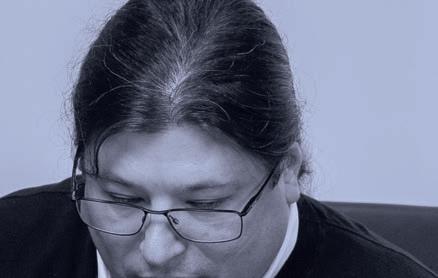















26 Bar Bulletin - February 8, 2023 - Volume 62, No. 3 Personal injury lawyers with an aggressive, complex trial approach Accepting Referrals and Co-Counseling Relationships for Medical and Legal Malpractice Claims. DavisKelin.com 505.588.7319































































































































































































































































































































































































































































































































































































































































Bar Bulletin - February 8, 2023 - Volume 62, No. 3 27 Mar 3 2023 Annual In person & virtual attendance available A one-day seminar to provide a multitude of perspectives in the estate planning industry. Designed specifically for attorneys, bankers, investment advisors, estate planning and tax practitioners and financial planners. Register abqcf.org/epc SPONSORED BY Professional accreditation will be available. EARLY BIRD REGISTRATION OPEN NOW @ABQFOUNDATION 505.881.3338 www.ziatrust.com 6301 Indian School Road, Suite 800, Albuquerque, NM 87110 We’ll Meet You. even out Here. Our team of Trust Officers and 3 local offices provide fiduciary services across the state. It’s an honor to serve residents of The Land of Enchantment, and clients in 41 other states. The Advisors’ Trust Company® Zia Trust, Inc.
We work alongside your clients’ investment advisor
Three Rivers Petroglyphs, New Mexico

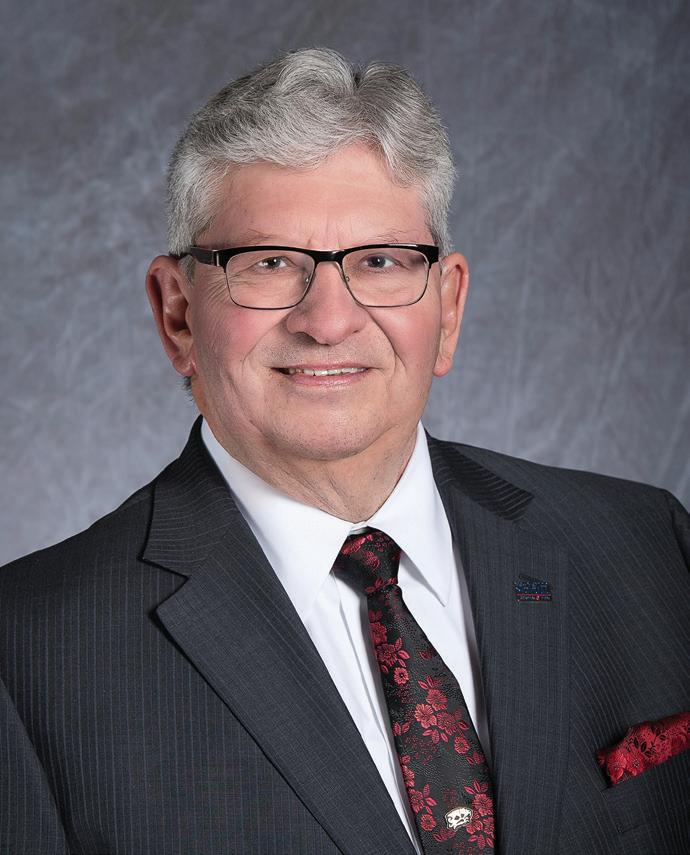







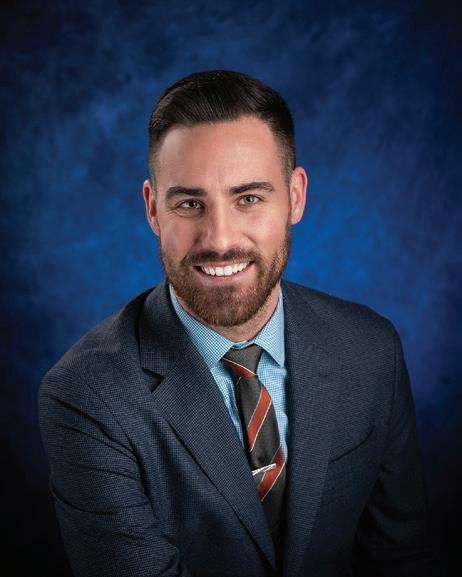
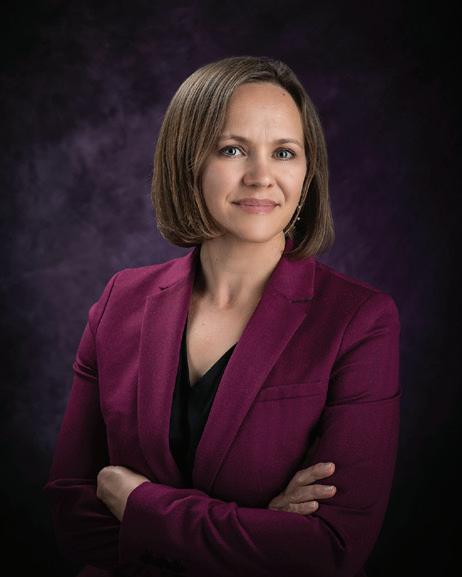
28 Bar Bulletin - February 8, 2023 - Volume 62, No. 3 CPA Expert Witness Commercial Damages Business Valuation Fraud and Forensic Analysis Mediation 2155 Louisiana Blvd NE Ste. 7000, Albuquerque, NM 87110 505-200-3800 | www.bacahoward.com Samuel L. Baca, CPA/ABV/CFF, CVA, MAFF 12 CLE HOURS ST. THOMAS, U.S. VIRGIN ISLANDS APRIL 17-21, 2023 V i s i t www D e s t i n a t i o n C L E s c o m f o r m o r e i n f o r m a t i o n F r e n c h m a n ’ s R e e f M a r r i o t t R e s o r t State Bar of New Mexico Members receive a special discounted headshot price of $69 (discounted from $199). We also provide special group rates! Call us for information about discounted family photo packages! www.bryansphotography.com • 505.890.0179
Equity in Justice

Listening Session on Disability
If you are a lawyer with a disability or a primary caretaker of a person with a disability, we invite you to a candid conversation regarding your experiences in the legal profession and legal settings and your recommendations for improvement. Please reach out to Dr. Amanda Parker at amanda.parker@sbnm.org or call 505-797-6085 to be part of or help facilitate this session.
505-629-3116
1650 Hospital Drive, Suite 300 Santa Fe, NM 87501 www.ellewell.com

We provide full service chiropractic, acupuncture, medical, physical therapy, massage, rehabilitation and holistic services for patients injured in car accidents or personal injury cases.

We have 20 years of experience in treating these cases with great success and patient satisfaction. We also have extensive experience in necessary medical billing, depositions and as expert witnesses.


Bar Bulletin - February 8, 2023 - Volume 62, No. 3 29 JOSEPH B. WOSICK, ESQ. Mediation and arbitration services Over 30 years of litigation experience Let me help you resolve your case $350/hr 4908 Alameda Blvd. NE Albuquerque, NM 87113 Phone: (505) 266-3995 Fax: (505) 268-6694 jwosick@ylawfirm.com 1540 Juan Tabo NE, Suite H, Albuquerque, NM 87112 bletherer@licnm.com • 505.433.4266 www.licnm.com Make sure your insurance policy has: • Prior acts coverage, to cover your past work. • Claim expenses outside the limit of liability, no PacMan. • “A” rating from A.M. Best, important, some companies are NOT! • Free tail options for retiring attorneys. I NSURANCE C ONSULTANTS, INC P ROFESSIONAL L IABILITY S PECIALISTS Brian Letherer We help solve insurance problems for the growth of your firm We shop up to 22 professional liability insurance companies to find the right price and fit for your law firm.
Mallory Letherer
Law Clerk, U.S. District Court, District of New Mexico, Hon. James O. Browning
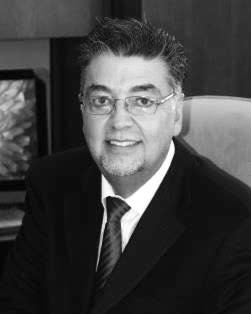
The Honorable James O. Browning is seeking a full-time Term Law Clerk for his Albuquerque chambers. Appointment commences February 6, 2023 and ends September 3, 2023. $69,777 to $99,451 Annual, DOQ. See details at www.nmd.uscourts.gov/employment.
Law Clerk, U.S. District Court, District of New Mexico, Hon. Laura Fashing
U.S. Magistrate Judge Laura Fashing is seeking a full-time Term Law Clerk for her Albuquerque chambers. Anticipated start date of March 1, term minimum of 18 months (until August 31, 2024), maximum of 4 years. $69,777 to $99,451 Annual DOQ. See details at www.nmd.uscourts.gov/employment.

Associate Attorney
Whitener Law Firm, P.A. is currently seeking a full-time associate attorney to handle Personal Injury cases. Candidates must be highly motivated, client oriented and enjoy working in a fast-paced environment. Candidates must be licensed to practice in the state of New Mexico. Salary competitive and commensurate to experience and qualifications. Please send resume to Leanne Duree, Whitener Law Firm, P.A., 4110 Cutler Avenue, N.E., Albuquerque, NM 87110, fax to 505-242-3322 or e-mail to leanne@whitenerlawfirm.com.
Associate Attorney
Righi Fitch Law Group is a regional law firm that serves the legal needs of the insurance industry, construction industry, businesses and individuals throughout the states of Arizona, Colorado, New Mexico, Utah, & Hawaii. We are growing our team of motivated and skilled attorneys to be a part of our New Mexico office. Ideal candidates will have the following qualifications: 5 plus years experience in civil litigation; Experience handling and litigating complex bodily/personal injury and wrongful death cases; Experience handling construction defect cases a plus, not required; Experience taking both lay and expert depositions; Strong writing skills; Trial experience a plus, not required. Our law firm is dedicated to meeting all of our clients' needs. We are small enough to maintain personal relationships with our clients and offer costeffective representation, yet we have the staff and resources to handle complex insurance defense, construction, business, and injury cases. Our office is committed to hiring and retaining a diverse workforce. We are proud to be an Equal Opportunity/Affirmative Action Employer, making decisions without regard to race, color, religion, creed, sex, sexual orientation, gender identity, marital status, national origin, age, veteran status, disability, or any other protected class. We offer a great office environment with remote flexibility, competitive salary and benefits package. For consideration please submit resume, writing sample and salary requirements to Leslie LeRoux, Director of Operations, at Righi Fitch Law Group – leslie@righilaw.com.
Prosecutors
Immediate openings for Prosecutors in Las Vegas, New Mexico. Work with a diverse team of professionals, a manageable caseload with a competitive salary in a great workplace environment. If you are interested in learning more about the positions or wish to apply, contact us at (505) 425-6746, or forward your letter of interest and resumé to Thomas A. Clayton, District Attorney, c/o Mary Lou Umbarger, Office Manager, P.O. Box 2025, Las Vegas, New Mexico 87701 or e-mail: mumbarger@da.state.nm.us
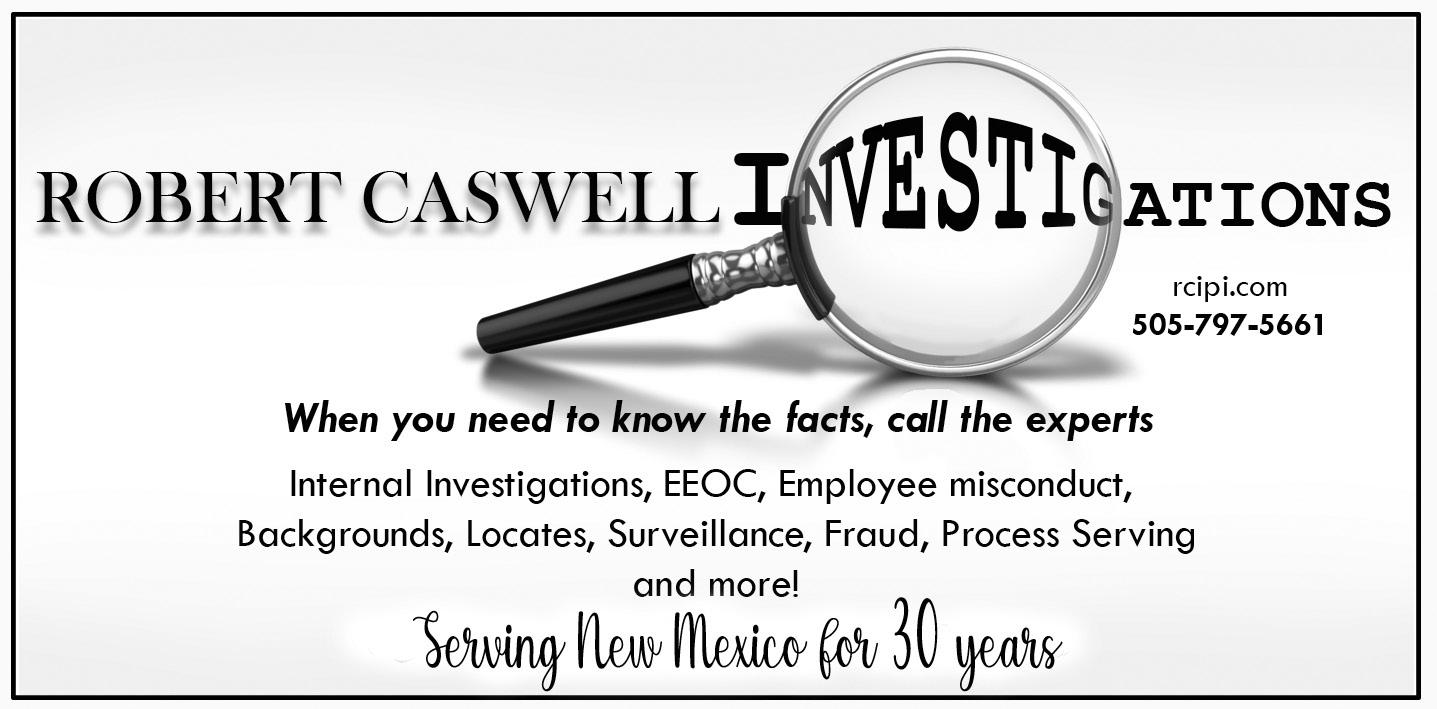
30 Bar Bulletin - February 8, 2023 - Volume 62, No. 3 Mediation John
Pound jbpsfnm@gmail.com 505-983-8060 505 Don Gaspar, Santa Fe 42 years legal experience as State District Judge (21 years), Trial Lawyer and Mediator/Arbitrator ShortDeadlines Accommodated MEDIATION & ARBITRATION SERVICES SANCHEZ SETTLEMENT & LEGAL SERVICES LLC ♦ (505) 720-1904 sanchezsettled@gmail.com ♦ www.sanchezsettled.com HON. WILLIAM A. SANCHEZ, RET. In-Office or Zoom Mediations Statewide Positions Classified
B.
Assistant County Attorney
Los Alamos County Attorney's Office
$108,788 -$177,144
Open Until Filled
Position Summary: Under supervision and at the direction of the County Attorney and the Deputy County Attorney, provides legal advice and counsel, prepares legal research, assists in developing ordinance and administrative regulations, provides legal, and policy analysis of issues, and drafts and negotiates con-tracts. Maintains confidentially of information as required by the Rules of Professional Conduct. The Assistant County Attorney serves at the pleasure of the County Attorney. Minimum Qualifications: Juris Doctorate Degree from an accredited law school; Five years of experience providing legal representation to public or private sector policy-makers; Obtain and maintain membership of New Mexico State Bar, in good standing, or if from an-other state, must be awaiting State Bar exam results and be a member of New Mexico State Bar within four months of employment or must be eligible for, obtain and abide by the rules of a limited license pursuant to SCRA 15-301.1. The Los Alamos County website where you can apply is: https://selfservice.losalamosnm.us/ess/ employmentopportunities. Questions? Contact: Los Alamos County – Human Resources Office – 505-662-8040
Various Assistant City Attorney Positions
The City of Albuquerque Legal Department is hiring for various Assistant City Attorney positions. The Legal Department’s team of attorneys provides a broad range of legal services to the City, as well as represent the City in legal proceedings before state, federal and administrative bodies. The legal services provided may include, but will not be limited to, legal research, drafting legal opinions, reviewing and drafting policies, ordinances, and executive/administrative instructions, reviewing and negotiating contracts, litigating matters, and providing general advice and counsel on day-to-day operations. Attention to detail and strong writing and interpersonal skills are essential. Preferences include: Five (5)+ years’ experience as licensed attorney; experience with government agencies, government compliance, real estate, contracts, and policy writing. Candidates must be an active member of the State Bar of New Mexico in good standing. Salary will be based upon experience. Current open positions include: Assistant City Attorney – EHD – Air Quality; Assistant City Attorney – Property & Finance For more information or to apply please go to www.cabq.gov/jobs. Please include a resume and writing sample with your application.
Assistant Federal Public Defender –Albuquerque 2022-14
The Federal Public Defender for the District of New Mexico is accepting applications for a full-time Assistant Federal Public Defender in the Albuquerque office. The federal defender organization operates under the Criminal Justice Act, 18 U.S.C. §3006A, to provide criminal defense and related help in federal courts. More than one position may be filled from this posting. Job Description/Qualifications: This position is for a licensed attorney with three years minimum criminal trial experience preferred. Other equally relevant experience will be considered. Successful applicants must have a commitment to the representation of indigent, disenfranchised and underserved individuals and communities. Responsibilities include, but are not limited to: managing an extensive caseload, developing litigation strategies, preparing pleadings, appearing in court at all stages of litigation, and meeting with clients, experts, witnesses, family members and others. Applicants must possess strong oral and written advocacy skills, have the ability to build and maintain meaningful attorney-client relationships, be team oriented but function independently in a large, busy office setting, and communicate effectively with clients, witnesses, colleagues, staff, the court, and other agency personnel. Spanish language proficiency is preferred. Travel is required (training, investigation, and other case-related travel). Requirements: Applicants must be graduates of an accredited law school and admitted to practice in good standing before the highest court of a state. The selected candidate must be licensed to practice in the U.S. District Court, District of New Mexico, by the time of entrance on duty. The selected candidate will be required to obtain admission to the New Mexico State Bar and the Supreme Court within the first year of employment. Applicants must be eligible to work for the United States. Salary and Benefits: This position is full time with a comprehensive benefits package that includes: health and life insurance, vision and dental benefits, flexible spending accounts, paid time off, sick leave, leave for all federal holidays, participation in the Federal Employees’ Retirement System, and participation in the Thrift Savings Plan with up to 5% government matching contributions. Salary is dependent upon qualifications and experience, and is equivalent to salaries of Assistant U.S. Attorneys with similar qualifications and experience. Salary is payable only by electronic funds transfer (direct deposit). Conditions of Employment: Appointment to the position is contingent upon the successful completion of a background check and/ or investigation including an FBI name and fingerprint check. Employees of the Federal Public Defender are members of the judicial
branch of government and are considered “at will.” You must be a U.S. citizen or person authorized to work in the United States and receive compensation as a federal employee. All employees must be fully vaccinated for Covid-19 and provide proof of such prior to entrance on duty. Employees will be required to stay up-to-date and comply with the current and ongoing recommendations by the CDC and/or New Mexico Department of Health regarding Covid-19 vaccinations and boosters. Application Information: In one PDF document, please submit a statement of interest and resume describing your trial and appellate work, with three references to: Margaret A. Katze, Federal Public Defender FDNM-HR@fd.org; Reference 2022-14 in the subject. Applications must be received by February 12, 2023. Writing samples will be required only from those selected for interview. Position(s) will remain open until filled and is subject to the availability of funding. The Federal Public Defender is an equal opportunity employer. We seek to hire individuals who will promote the diversity of the office and federal practice. No phone calls please. Submissions not following this format will not be considered. Only those selected for interview will be contacted.
Associate Litigation Attorney
Hinkle Shanor LLP is seeking an associate attorney to join their Albuquerque office in 2023! The Albuquerque office of Hinkle Shanor is heavily specialized in medical malpractice defense litigation. Ideal candidates will demonstrate strong academic achievement, polished writing skills, and have 2 or more years of experience. Substantial consideration will be given to candidates with prior medical malpractice litigation experience. Interested candidates should submit a resume and cover letter. Highly competitive salary and benefits. All inquiries will be kept confidential. Please email resumes and cover letters to Recruiting@hinklelawfirm.com.
Litigation Attorney
Cordell & Cordell, P.C., a domestic litigation firm with over 100 offices across 36 states, is currently seeking an experienced litigation attorney for an immediate opening in its office in Albuquerque, NM. The candidate must be licensed to practice law in the state of New Mexico, have minimum of 3 years of litigation experience with 1st chair family law preferred. The firm offers 100% employer paid premiums including medical, dental, shortterm disability, long-term disability, and life insurance, as well as 401K and wellness plan. This is a wonderful opportunity to be part of a growing firm with offices throughout the United States. To be considered for this opportunity please email your resume to Hamilton Hinton at hhinton@cordelllaw.com
Bar Bulletin - February 8, 2023 - Volume 62, No. 3 31 www.sbnm.org
RFQ/SOI Request for Qualifications and Statement of Interest
The New Mexico Office of Superintendent of Insurance, through its Title Insurance Bureau, is soliciting proposals from attorneys/ law firms to provide legal services for the Title Insurance Bureau specifically related to the biennial setting of uniform premium rates and the promulgation of all policy forms, including endorsement forms. All interested attorneys or law firms may obtain a copy of the Request for Qualifications and Statement of Interest (“RFQ/SOI”) from the Office of Superintendent of Insurance’s website, https:// www.osi.state.nm.us/pages/about-us/rfps. The deadline for submitting a RFQ/SOI is 02/28/2023 5:00 P.M. MST.
Attorney
JGA is seeking an attorney, licensed/good standing in NM with at least 3 years of experience in Family Law, Probate, and Civil Litigation. Please send cover letter, resume, and 3 references to: jay@jaygoodman.com. All replies will be kept confidential.
Deputy District Attorney, Senior Trial Attorneys, Trial Attorneys, and Assistant Trial Attorneys
The Third Judicial District Attorney’s Office in Las Cruces is seeking a Deputy District Attorney, Senior Trial Attorneys, Trial Attorneys, and Assistant Trial Attorneys. You will enjoy the convenience of working in a metropolitan area while gaining valuable trial experience alongside experienced Attorney’s. Please see the full position descriptions on our website http://donaanacountyda.com/ Submit Cover Letter, Resume, and references to Whitney Safranek, Human Resources Administrator at wsafranek@da.state.nm.us
Senior Trial Attorney
Senior Trial Attorney wanted for immediate employment with the Seventh Judicial District Attorney’s Office, which includes Catron, Sierra, Socorro and Torrance counties. Employment will be based primarily in Socorro County (Socorro, NM). Socorro is an hour drive from Albuquerque. Must be admitted to the New Mexico State Bar. Salary range will be $76,611 - $95,763, and commensurate with experience and budget availability. Will also have full benefits and excellent retirement plan. Send resume to: Seventh District Attorney’s Office, Attention: J.B. Mauldin, P.O. Box 1099, 302 Park Street, Socorro, New Mexico 87801. Or email to: jbmauldin@da.state.nm.us .
Plaintiff Associate AttorneyParnall Law Firm
$25,000 local sign-on bonus MISSION STATEMENT: To use intelligent, compassionate and determined advocacy to effectively maximize reimbursement of the value of our client’s harm, and the wrong that caused it and to make sure that, at the end of the case, the client is satisfied and knows Parnall Law has stood up for, fought for, and given voice and value to his or her harm.
RESPONSIBILITIES: As a Parnall Attorney you will be supported by senior attorneys, legal assistants, paralegals and case managers, and other staff who will help lead client communications, obtain and prepare documents, and assist with the various demands related to your cases. Overall organization and attention to detail are paramount to this position along with the willingness and ability to regularly interact with clients, adjusters, and other lawyers/paralegals over the phone and/or in-person. Intakes: Meet with clients to evaluate case for representation; Take all facts pertinent to liability, damages, coverage; Show compassion; Posture case by articulating client and office action items; Explain representation agreement and have sign; Bring in paralegal. Investigation: Evaluate needed investigation; Communicate with paralegal about what investigation tasks need to be completed; Determine if UM/UIM applies; Posture the case for trial or negotiations. Correspondence: Compose letters and requests. Negotiation: Meet with clients to evaluate and get authorization to negotiate; Negotiate with adjusters and keep client informed; Prepare case for mediation; peak with adjusters, build and maintain negotiation relationships, aggressively negotiate and/or posture cases with adjusters where appropriate; Make determination about filing suit or further negotiations; If filing suit, prepare client for litigation process. Litigation: Draft pleadings and discovery for lawsuits; Compose discovery responses; Compose discovery requests; Prepare case for trial, arbitration, and/or mediation. QUALIFICATIONS: 3 + years of experience in litigating personal injury cases (plaintiff or defense); Licensed or ability to become licensed in New Mexico, either through reciprocity, transferring UBE score to New Mexico, or taking the bar exam; Be available in the office from Monday through Friday, 8 to 5 (and more as required for caseload). BENEFITS: A positive fun, caring environment where learning and growing are encouraged; Opportunities for community outreach throughout the year; Medical/Dental/Vision Benefits, 401k, PTO, Bonus Pay. To apply submit resume to jennygarcia@parnalllaw.com or visit: www. hurtcallbert.com/careers
CYFD Children’s Court Appellate Attorney, Attorney III, Attorney II, Attorney I, and Legal Secretary
Positions
Position Job ID: Various: The New Mexico Children, Youth and Families Department is seeking an Appellate Attorney to represent CYFD Protective Services in the Court of Appeals and the Supreme Court. Demonstrated excellence in legal writing and analysis is a must. Experience in child welfare law or experience in appeals is preferred. In addition to the Appellate counsel position, CYFD has openings for litigators and legal support staff throughout the state, including: Children’s Court Attorney III (with an emphasis on ICWA/IFPA), Children’s Court Attorney II, Children’s Court Attorney I, and Legal Secretary positions. The annual salary ranges for these positions are Appellate Attorney $71,061 - $113,698, Attorney III $71,061- $113,698, Attorney II $65,062$104,099, Attorney I $60,031- $96,050, and Legal Secretary $33,592- $50,388, depending on experience and qualifications. Minimum qualifications, employment requirements, and work conditions can be reviewed at the state website. There are limited licensure and reciprocity options for New Mexico Bar admission. Benefits include medical, dental, vision, paid vacation, and a retirement package. For additional information about these positions, please contact: Marisa Salazar (505) 659-8952. To apply for a position, go to www.spo.state.nm.us. The State of New Mexico is an EOE.
Staff Attorney Full-Time Position
New Mexico Black Leadership Council
Job Description: The New Mexico Black Leadership Council, a 501(c )(3) organization, is looking to hire a litigation attorney whose primary focus will be maintaining an inventory of cases focused on civil rights and social justice of protections for low- and moderateincome individuals. The ideal candidate will be a creative, self-motivated, hard-working individual who is committed to helping build and sustain the organization’s legal program and has a passion for addressing civil rights and social justice issues, with a strong focus on housing stability. For more information or to schedule an interview call (505) 205-0868. Salary commensurate with experience. Position to remain open until filled.
32 Bar Bulletin - February 8, 2023 - Volume 62, No. 3 www.sbnm.org
Attorneys – Advising APD
The City of Albuquerque Legal Department is hiring attorneys with the primary responsibility of advising the Albuquerque Police Department (APD). Duties may include: representing APD in the matter of United States v. City of Albuquerque, 14-cv-1025; reviewing and providing advice regarding policies, trainings and contracts; reviewing uses of force; drafting legal opinions; and reviewing and drafting legislation, ordinances, and executive/administrative instructions. Attention to detail and strong writing skills are essential. Additional duties and representation of other City Departments may be assigned. Salary and position will be based upon experience. Please apply on line at www.cabq.gov/jobs and include a resume and writing sample with your application.
Associate Attorney
Alcaraz Law, P.A., a civil defense firm, is seeking a full-time associate attorney with 2+ years’ experience. Excellent benefits. All replies will be kept confidential. Send cover letter and resume to heather@alcarazlawnm.com.
Entry Level and Experienced Attorneys
The Thirteenth Judicial District Attorney’s Office is seeking both entry level and experienced attorneys. Positions available in Sandoval, Valencia, and Cibola Counties. Enjoy the convenience of working near a metropolitan area while gaining valuable trial experience in a smaller office, providing the opportunity to advance more quickly than is afforded in larger offices. The 13th Judicial District offers flex schedules in a family friendly environment. Competitive salary depending on experience. Contact Krissy Fajardo @ kfajardo@da.state.nm.us or visit our website for an application @https:// www.13th.nmdas.com/ Apply as soon as possible. These positions fill fast!
8TH Judicial District Attorney (Taos and Colfax County)
Prosecuting Attorney Opportunities
Request For Letters of Interest
Notice is hereby given that the City of Albuquerque Legal Department calls for Proposals for Request For Letters of Interest for legal services in the area of appellate law. Interested parties may secure a copy of the Proposal Packet, by accessing the City’s website at https://www.cabq.gov/legal/documents/rflilegal-services.pdf.
Legal Assistant/ParalegalParnall Law Firm
2023 Bar Bulletin Publishing and Submission Schedule
The Bar Bulletin publishes twice a month on the second and fourth Wednesday. Advertising submission deadlines are also on Wednesdays, three weeks prior to publishing by 4 pm.
Advertising will be accepted for publication in the Bar Bulletin in accordance with standards and ad rates set by publisher and subject to the availability of space. No guarantees can be given as to advertising publication dates or placement although every effort will be made to comply with publication request. The publisher reserves the right to review and edit ads, to request that an ad be revised prior to publication or to reject any ad. Cancellations must be received by 10 a.m. on Thursday, three weeks prior to publication.
For more advertising information, contact: Marcia C. Ulibarri at 505-797-6058 or email marcia.ulibarri@sbnm.org
The 8th Judicial District Attorney Office is accepting applications for a full-time Associate Trial Attorney, Trial Attorney and Senior Trial Attorney. Requirements: Associate Trial / Trial Attorney: New prosecutor: Licensed attorney to practice law in New Mexico with zero (0) through two (2) years of relevant prosecution experience. Senior Trial Attorney: Career track prosecutor who is a Licensed attorney to practice law in New Mexico with three (3) through five (5) years of relevant prosecution experience. Salary: Based upon experience and the current District Attorney Personnel and Compensation Plan. Range of salary begin with Associate Trial Attorney at $72,000 upwards to $95,000 for Senior Trial Attorney. Please submit resumes and letters of interest to Victoria Bransford, District Office Manager by mail to 105 Albright Street, Suite L, Taos, NM 87571 and/or by email to vbransford@da.state.nm.us
Attorney Associate
The Bernalillo County Metropolitan Court is accepting applications for a full-time, At-Will, Associate Attorney position. Education/Experience: Must be a graduate of a law school meeting the standards of accreditation of the American Bar Association; possess and maintain a license to practice law in the state of New Mexico; and have at least three years’ experience in the practice of law. Salary: $31.273 to 39.091 hourly DOE plus State of NM benefits package. A complete copy of the job description is available at https://metro. nmcourts.gov/ or may be obtained in the Human Resource office of the Metropolitan Court. Apply at or send application/resume with a legal writing sample to the Bernalillo County Metropolitan Court, H. R. Division, 401 Lomas, Albuquerque, NM 87102. This position will be open until filled.
MISSION STATEMENT: Paralegal/Legal Assistant collaborates with all attorneys to provide them with information on assigned personal injury cases. We treat our clients with compassion and advocate for them by maximizing compensation caused by wrongful actions of others. Our goal is to ensure our clients are satisfied and know Parnall Law has stood up and fought for them by giving them a voice. RESPONSIBILITIES: Partner closely with our passionate attorneys; Following up with clients or insurance providers/carriers by phone, email, or mail; Ensuring all liability, UIM, and Med Pay claims are opened; Determine when to open or not to open health insurance subrogation claims; Complete analysis of case; Review and modify, update or edit demand packages; Collaborate with billing analysts to verify balances and coordinate benefits; Partner with settlement paralegal on settlement issues including reductions on subrogation claims and/or provider balances. QUALIFICATIONS: Significant interpersonal relationship skills; able to communicate by phone, email, text and in-person with a diverse group of personalities; Strong proven ability to work in a team collaborative environment; Self-starter with outgoing and results-oriented personality; Organization to work on multiple projects is strongly needed; Ability to listen, ask questions and make decisions; Desire to go the extra mile for the team and our clients; Possesses a strong working knowledge of Microsoft WORD and Excel; Experience in case management for plaintiffs preferred.
BENEFITS: A positive fun, caring environment where learning and growing are encouraged; Opportunities for community outreach throughout the year; Medical/Dental/Vision Benefits, 401k, PTO, Bonus Pay. To apply submit resume to jennygarcia@parnalllaw. com or visit: www.hurtcallbert.com/careers
Bar Bulletin - February 8, 2023 - Volume 62, No. 3 33 www.sbnm.org
www.sbnm.org
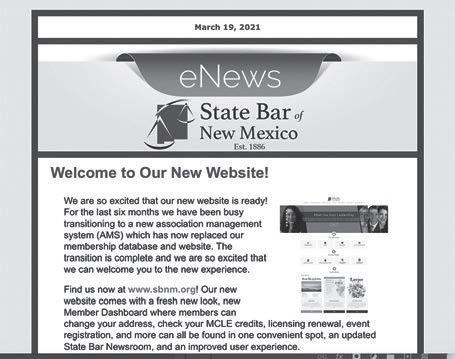
Senior Employee Relations Specialist (IRC116869)
The Los Alamos National Laboratory Human Resources – Employee Relations Group is seeking a Senior Employee Relations Specialist with an advanced level of knowledge to perform creative problem solving involving complicated employee relations matters. Employee Relations administration at LANL is as challenging as it is interesting. The Senior Employee Relations Specialist will be responsible for complex workplace investigations. Requirements include extensive knowledge of employee relations best practices and procedures and legal requirements affecting employee relations administration, including Title VII, ADA, FMLA, etc. Position typically requires a bachelor’s degree and a minimum of 8 years of related experience or equivalent combination of education and experience. While this position does not involve the practice of law, nor does it require bar admission or a law degree, lawyers have held these positions in the past and found them extremely rewarding. To see the full job ad and/or to apply go to: http:// lanl.jobs. Qualified applicants should apply to IRC116869. For specific questions about the status of this job, call Andrea Gonzales at (505) 5514237. Los Alamos National Laboratory is an EO employer – Veterans/Disabled and other protected categories. Qualified applicants will receive consideration for employment without regard to race, color, religion, sex, national origin, sexual orientation, gender identity, disability or protected veteran status.
Paralegal
The City of Albuquerque Legal Department is seeking a Paralegal to assist an assigned attorney or attorneys in performing substantive administrative legal work from time of inception through resolution and perform a variety of paralegal duties, including, but not limited to, performing legal research, managing legal documents, assisting in the preparation of matters for hearing or trial, preparing discovery, drafting pleadings, setting up and maintaining a calendar with deadlines, and other matters as assigned. Excellent organization skills and the ability to multitask are necessary. Must be a team player with the willingness and ability to share responsibilities or work independently. Starting salary is $24.68 per hour during an initial, proscribed probationary period. Upon successful completion of the proscribed probationary period, the salary will increase to $25.89 per hour. Competitive benefits provided and available on first day of employment. Please apply at https://www. governmentjobs.com/careers/cabq.
Paralegal
Batley Family Law, seeks an experienced, full time paralegal to join our professional team. As a team paralegal you will be working primarily for one attorney and dedicated clients with active support from the team. The team participates in weekly case huddles and action planning to best allocate work for deadlines to be met and to serve the client well. Duties include client relations, support of attorneys, preparing pleadings, motions, responses, discovery and financial worksheets, processing emails, maintaining files and calendars and case management. We are looking for a candidate with at least 3-5 years of experience as a paralegal with excellent attention to detail, research skills, the ability to work under pressure and great communication and organizational skills. Experience with Word, Outlook, Excel and a document management system required. The right candidate will be friendly, dedicated and a team player. In return you will get the opportunity to work with a great, hardworking team where you will expand your skills and knowledge within the industry. If interested in applying please send your resume along with a cover letter to lorrie@ batleyfamiylaw.com.
Paralegal
The Bernalillo County Metropolitan Court is accepting applications for a full-time, regular, paralegal position in the Office of General Counsel. For minimum qualifications, please see a complete copy of the job description, available at https://metro.nmcourts.gov/ or may be obtained in the Human Resource Office of the Metropolitan Court. Salary: $21.382 to $27.789 plus State of NM benefits package. Apply at or send application/resume with proof of education to the Bernalillo County Metropolitan Court, H. R. Division, 401 Lomas, Albuquerque, NM 87102. This position will be open until filled.
Office Space
Offices For Rent
820 Second Street NW, two blocks from courthouses, all amenities including copier, fax, telephone system, conference room, high-speed internet, phone service, receptionist, call Ramona at 243-7170
Private Office Suite in Law Office
Private office suite in law building for rent. Includes separate clerical common area, access to conference room, and kitchenette. Only a few blocks from all court houses located at 900 Lomas NW. Contact Kim @ 505-3313044 or email baiamonte4301@gmail.com
620 Roma NW
The building is located a few blocks from the federal, state and metropolitan courts. Monthly rent of $550 includes utilities (except phones), internet access, fax, copiers, front desk receptionist and janitorial service. You will have access to a law library, four conference rooms, a waiting area, off-street parking. Several office spaces are available. Call (505) 243 3751 for an appointment.
All-Inclusive North Valley Office Suite
Locally owned and operated. Move-in ready suite ideal for a solo attorney. Conveniently located in the North Valley with easy access to I-25, Paseo Del Norte, and Montano. Visit our web-site www.sunvalleyabq.com for more details or call Jaclyn Armijo at 505-343-2016.
34 Bar Bulletin - February 8, 2023 - Volume 62, No. 3
Get Your Business Noticed! Advertise in our email newsletter, delivered to your inbox every Friday. Contact Marcia Ulibarri, at 505-797-6058 or email marcia.ulibarri@sbnm.org Benefits: • Circulation of 8,000 • Affordable pricing
High open/click rates
Schedule flexibility
Popular content Winner of the 2016 NABE Luminary Award for Excellence in Electronic Media eNews State Bar of New Mexico Est. 1886
•
•
•
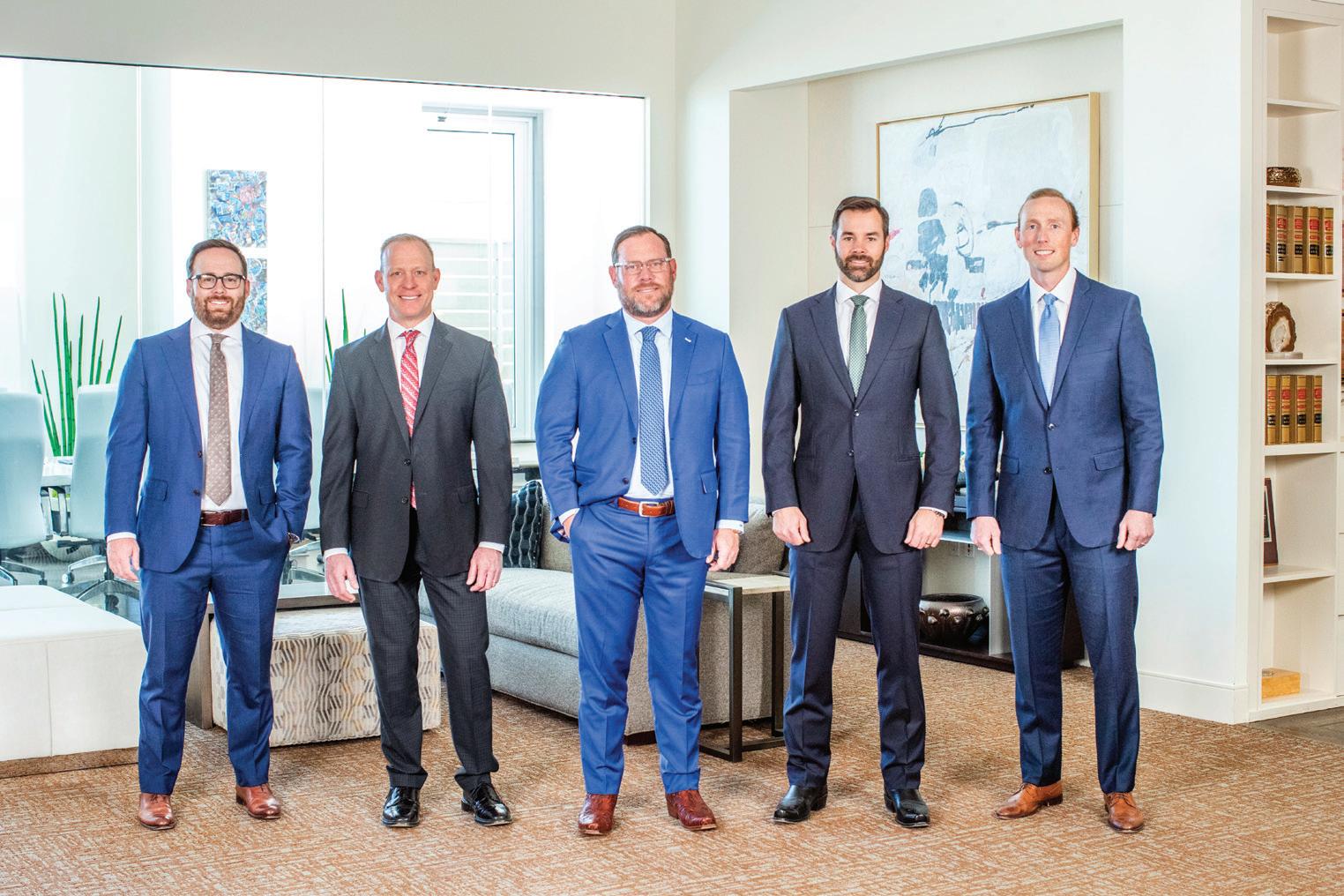
Bar Bulletin - February 8, 2023 - Volume 62, No. 3 35
Trusted by more than 150,000 professionals, LawPay is a simple, secure solution that allows you to easily accept credit and eCheck payments online, in person, or through your favorite practice management tools.




Vetted and approved by all 50 state bars, 70+ local and specialty bars, the ABA, and the ALA 62% of bills sent online are paid in 24 hours




Get started at lawpay.com/nmbar 888-726-7816 TOTAL:
New Case Reference **** **** **** 9995 *** Trust Payment IOLTA Deposit YOUR FIRM LOGO HERE PAY AT TORNEY PO WE R ED BY 22% increase in cash flow with online payments
$1,500.00
Data based on an average of firm accounts receivables increases using online billing solutions. LawPay is a registered agent of Wells Fargo Bank N.A., Concord, CA and Synovus Bank, Columbus, GA.
I love LawPay! I’m not sure why I waited so long to get it set up.
+ Member Benefit Provider
– Law Firm in Ohio









































































































































































































